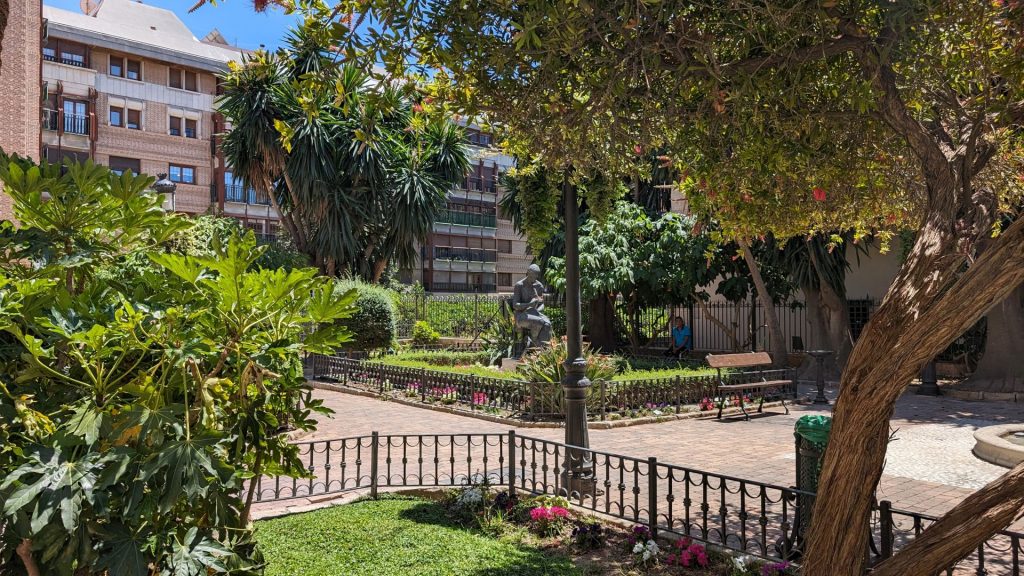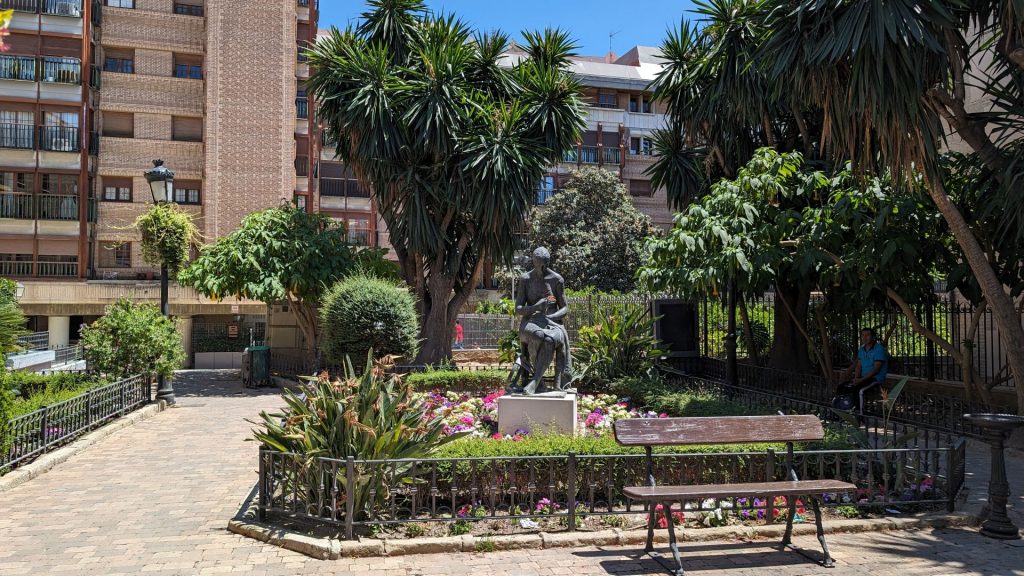May 13 was the day we visited the home of Licor 43. I had never heard of Licor 43 prior to going to Cartagena. It is now officially one of my favorite adult beverages.
Licor 43 is a secret family recipe (Really! Only three family members know the entire recipe) made with 43 (hence the name) natural ingredients. It is the best selling Spanish liqueur in the world.
Legend has it that 2,000 years ago in Cartagena, Spain, a version of Licor 43 known as “Liquor Mirabilis,” was first produced and enjoyed by the Romans, who conquered the city of Qart Hadasht (Cartagena) in 209 B.C. The drink we know today was inspired by this elixir. It began in 1946 when the secret recipe was bought by three members of the Zamora family. Licor 43 is still produced exclusively in Cartagena following the family recipe.
Only five ingredients are known publicly. The other 38 remain hidden in the brains of the three family members (I hope they never travel together!). Those known to the rest of us are:
— Coriander
— Vanilla
— Green Tea
— Lemons
— Oranges
We tasted the original 43, chocolate, crème brulée, and horchata. And we tasted two mixed drinks. We bought three bottles. It was such a fun experience!! I should note that we took a bus there, but it didn’t really go there. She dropped us off about a quarter of a mile away and only after some prompting. Weird. The return bus never showed up so we took a taxi home. 🙂 🙂
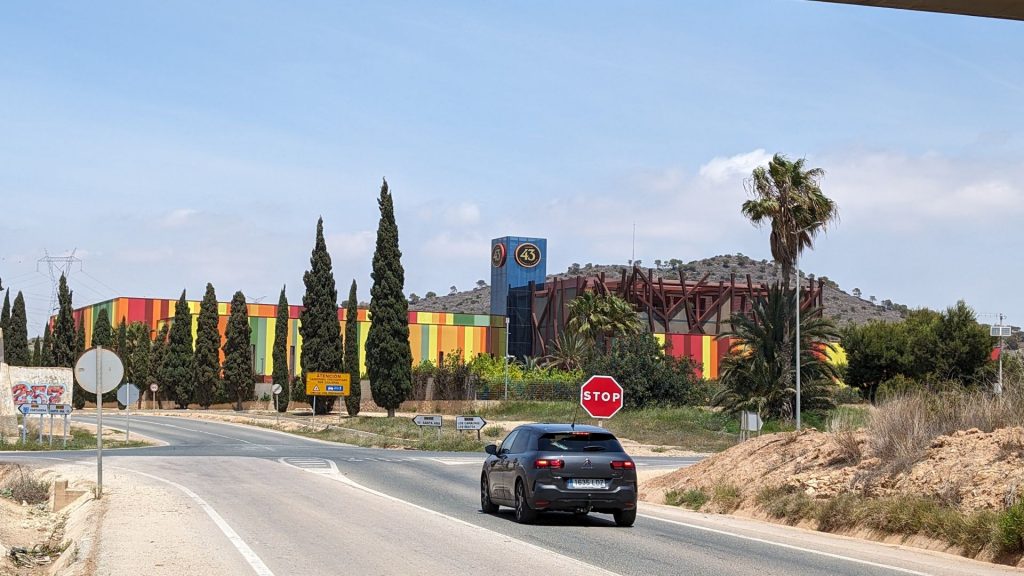
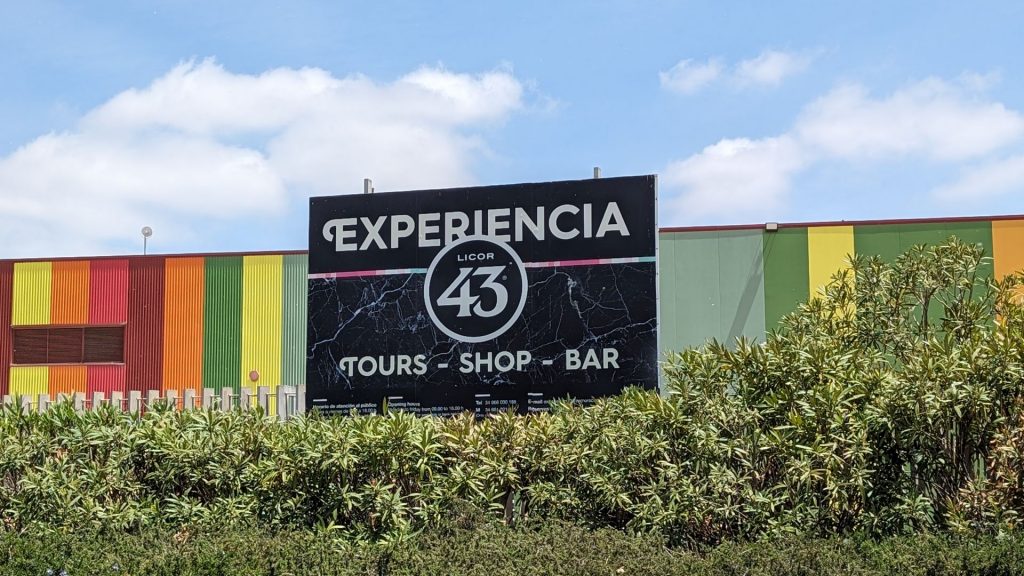
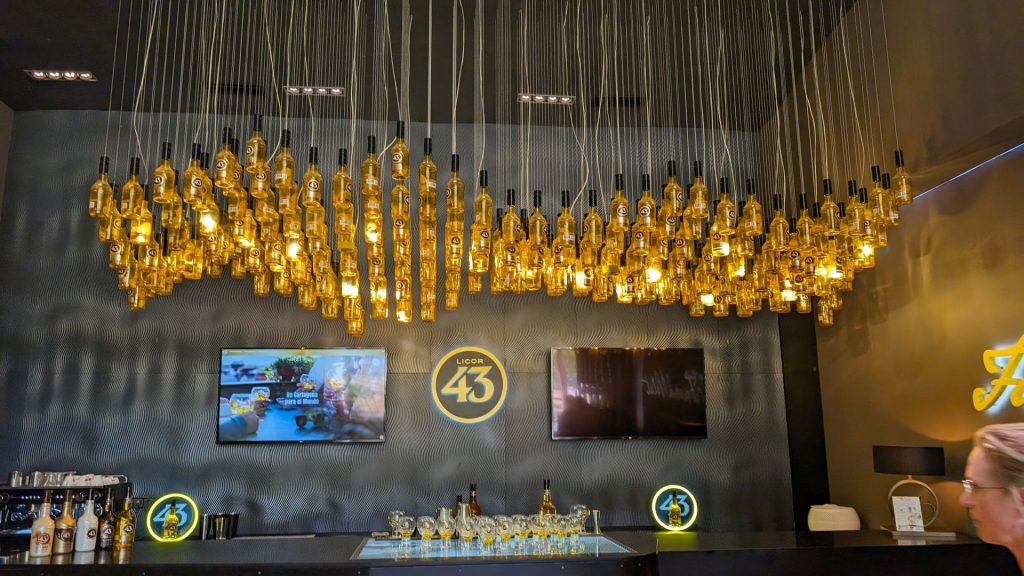
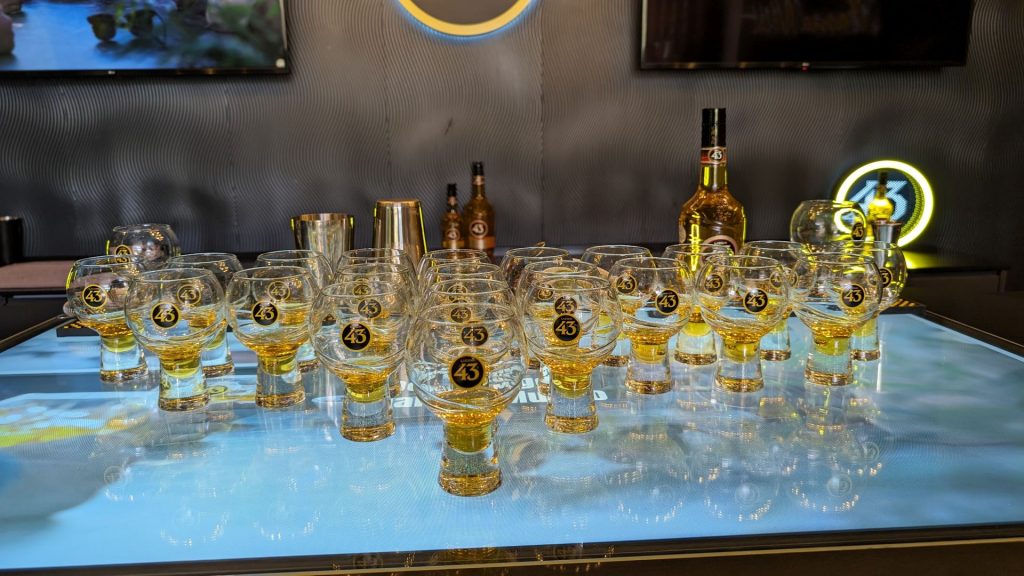
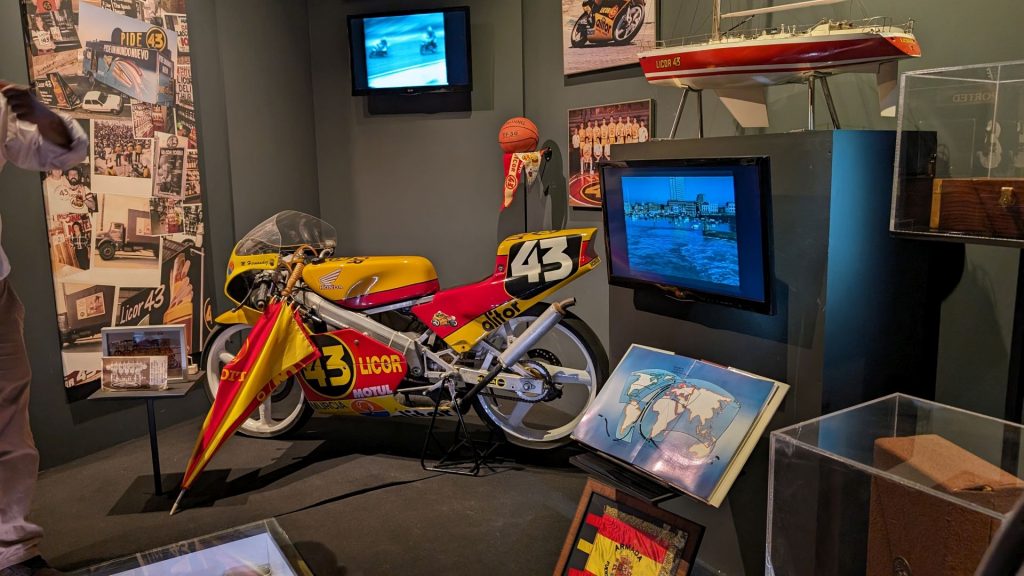
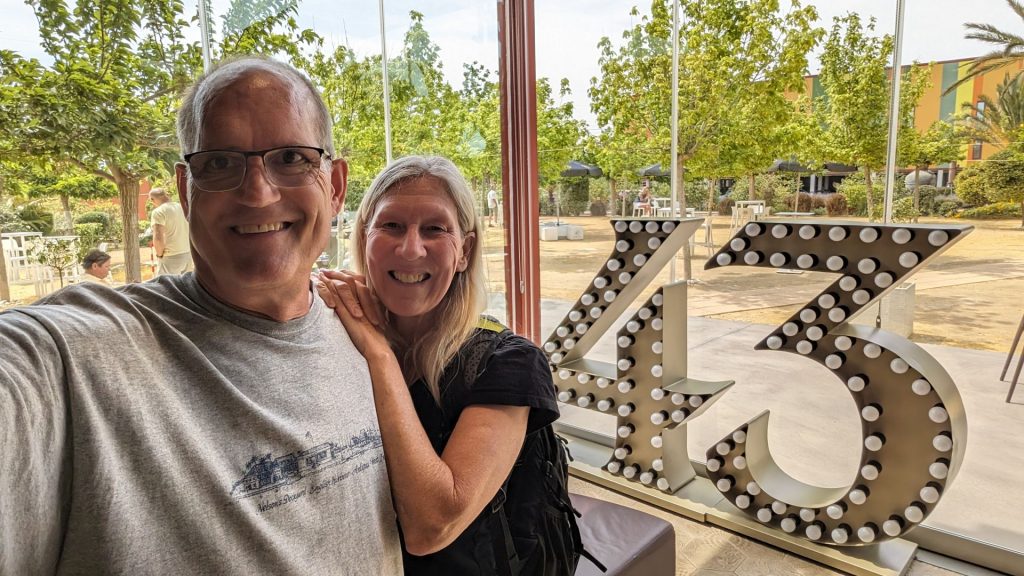
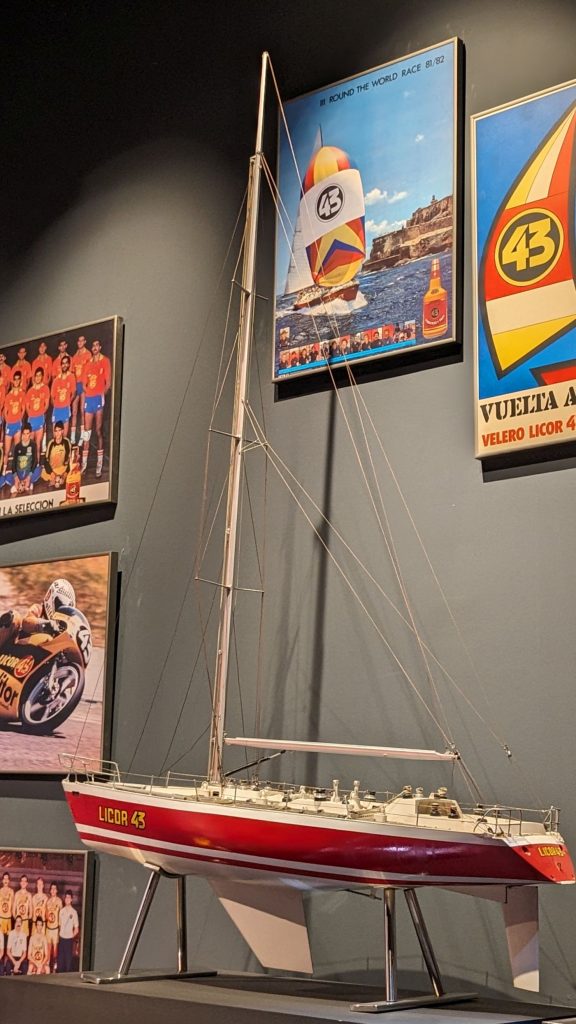
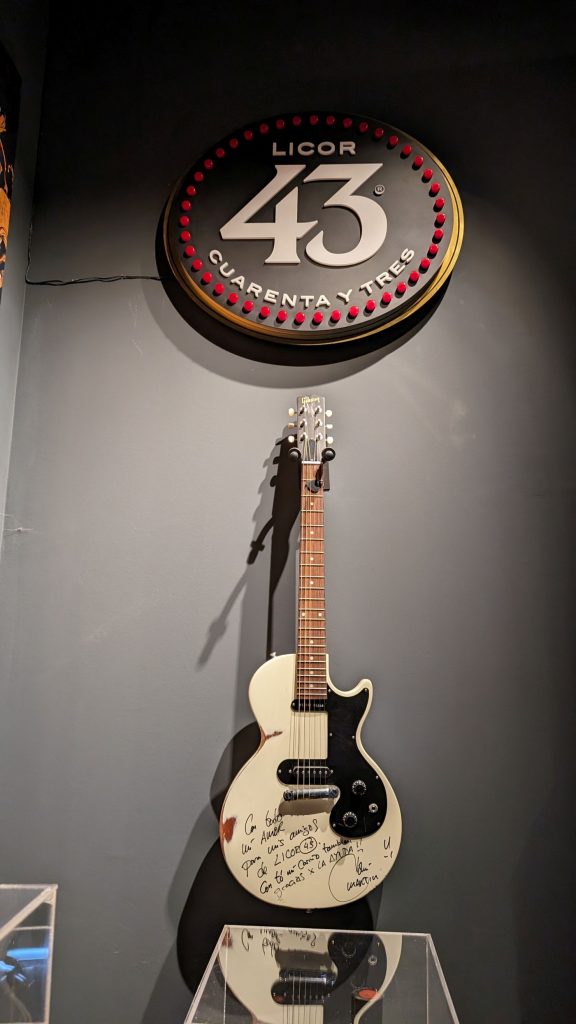
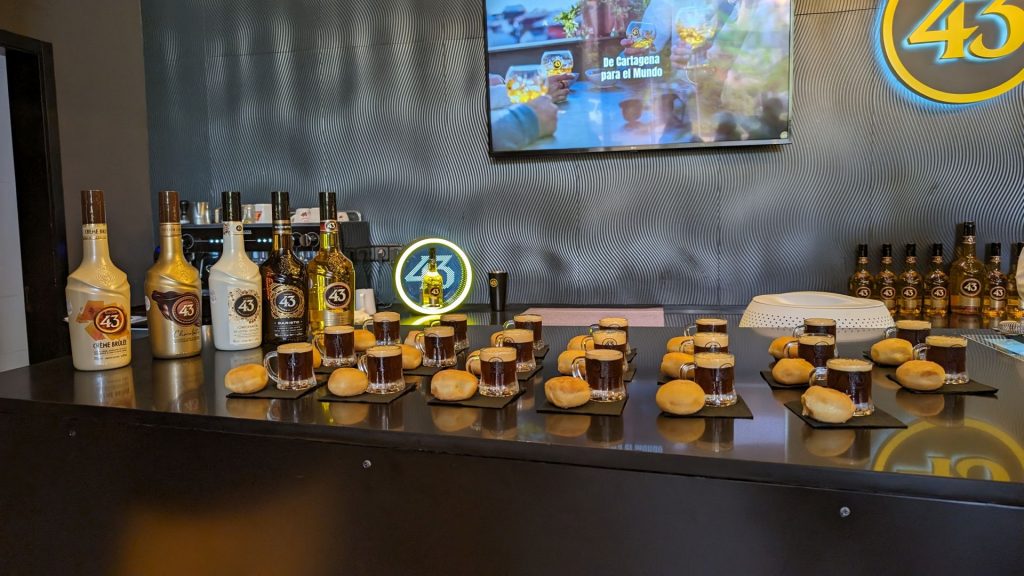
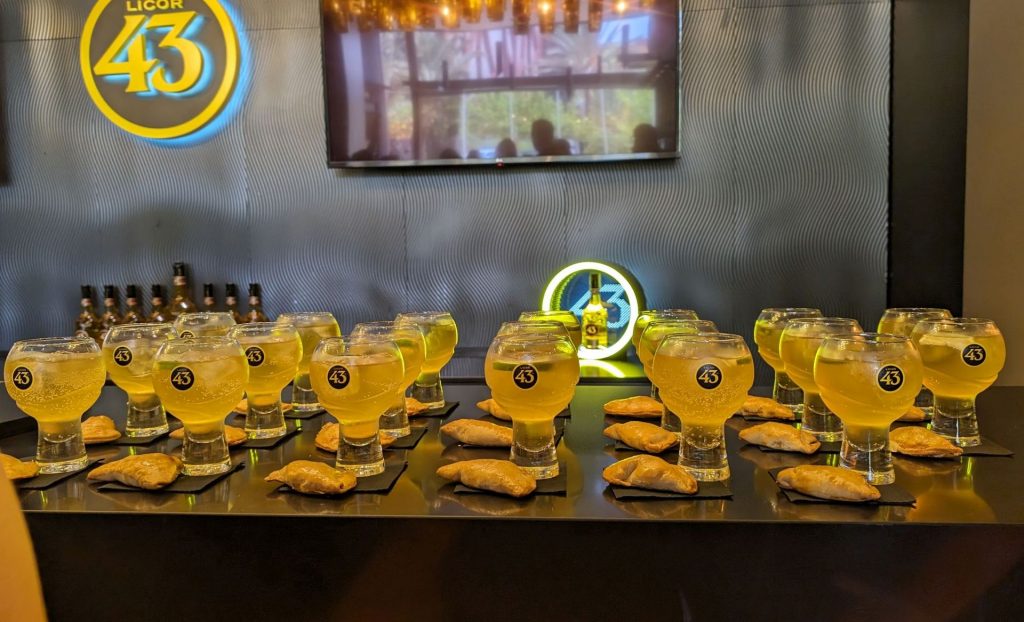
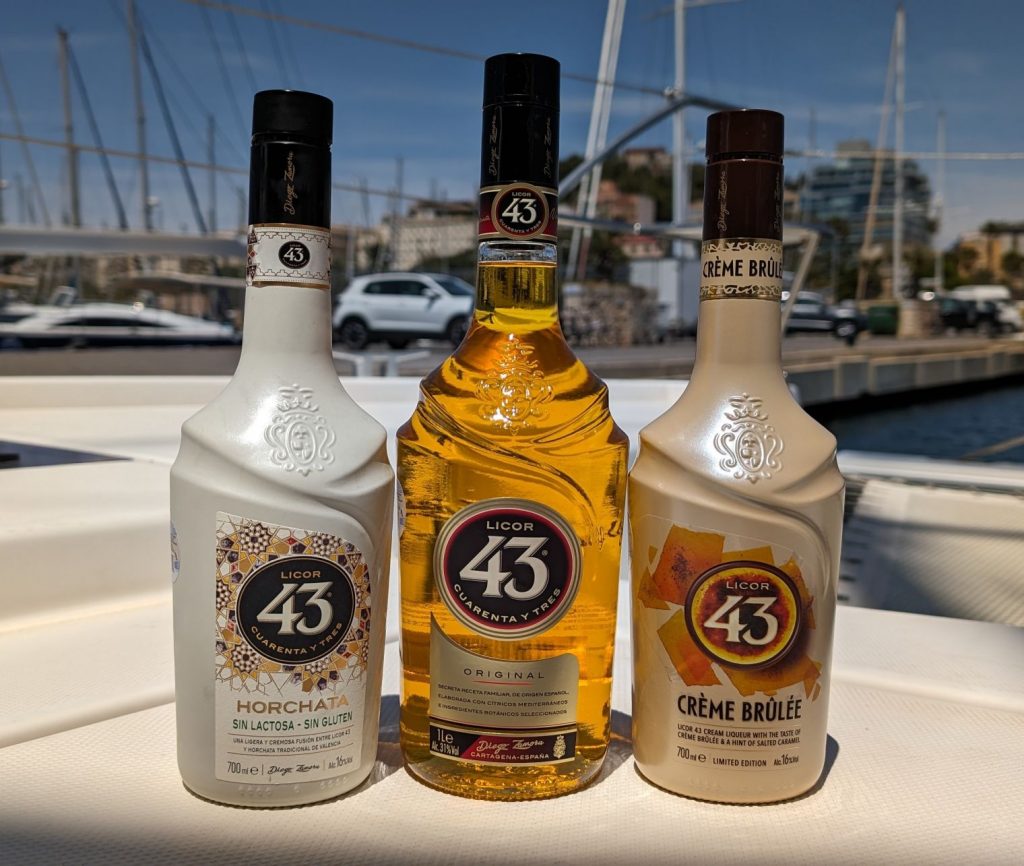
Cartagena is a popular cruise ship stop. We’ve had several ships as next door neighbors and others a bit farther away. A couple played snippets from “The Love Boat” song on their horns. 🙂 🙂
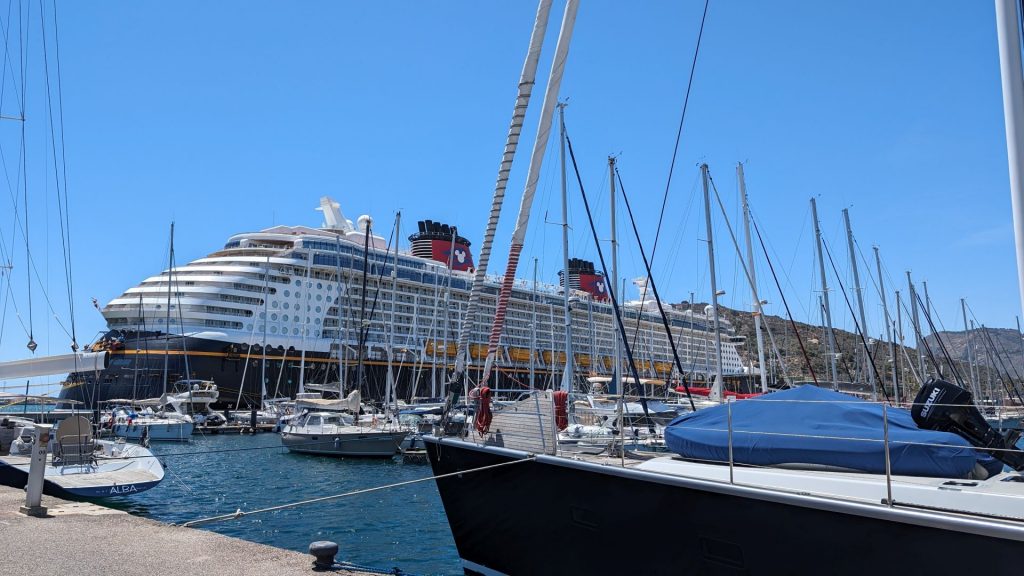
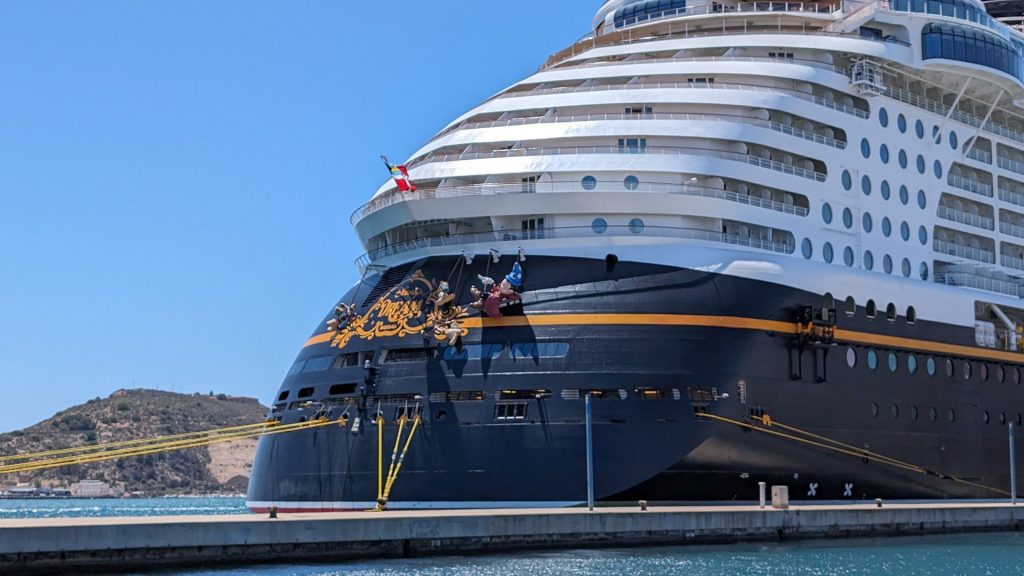
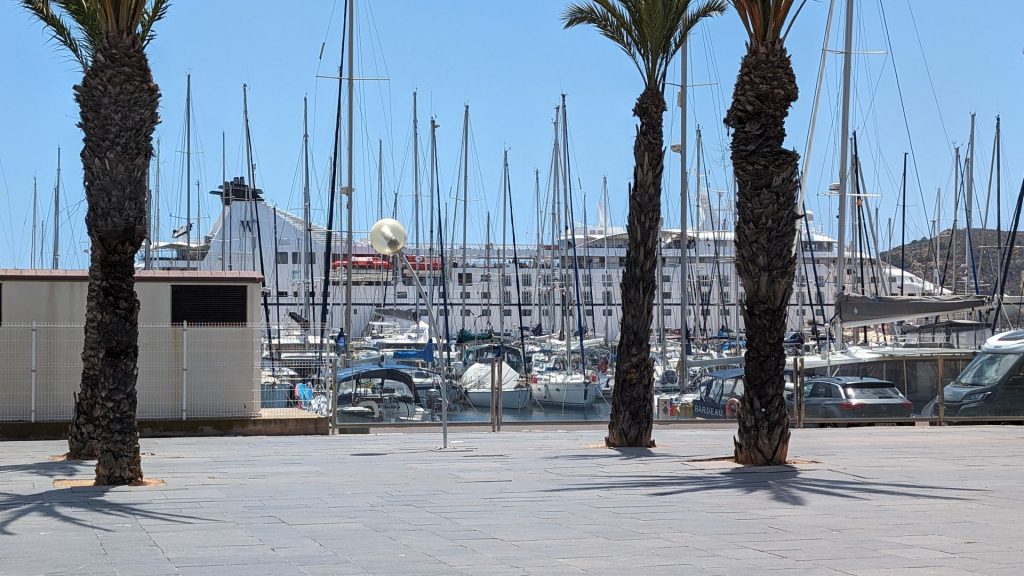
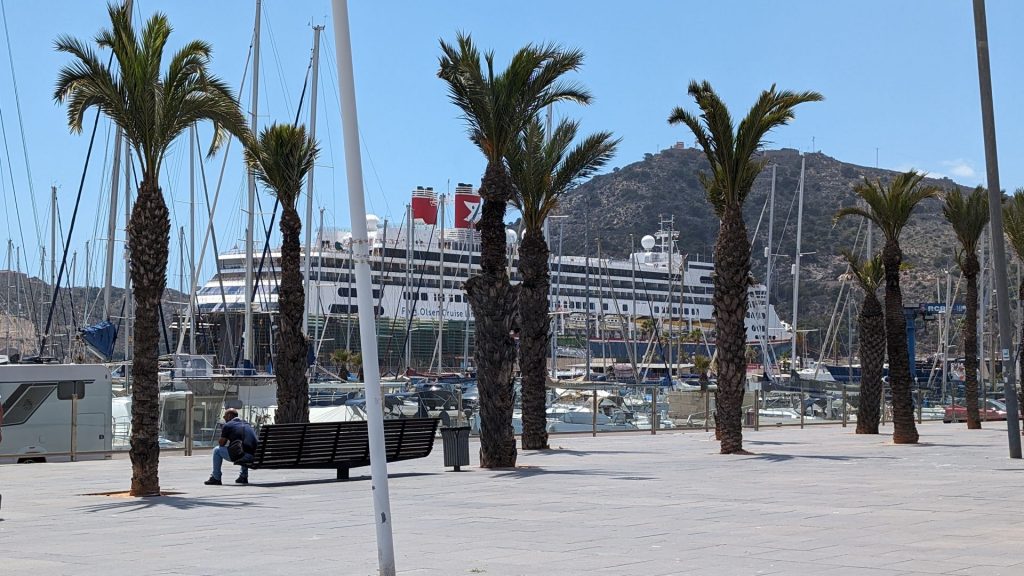
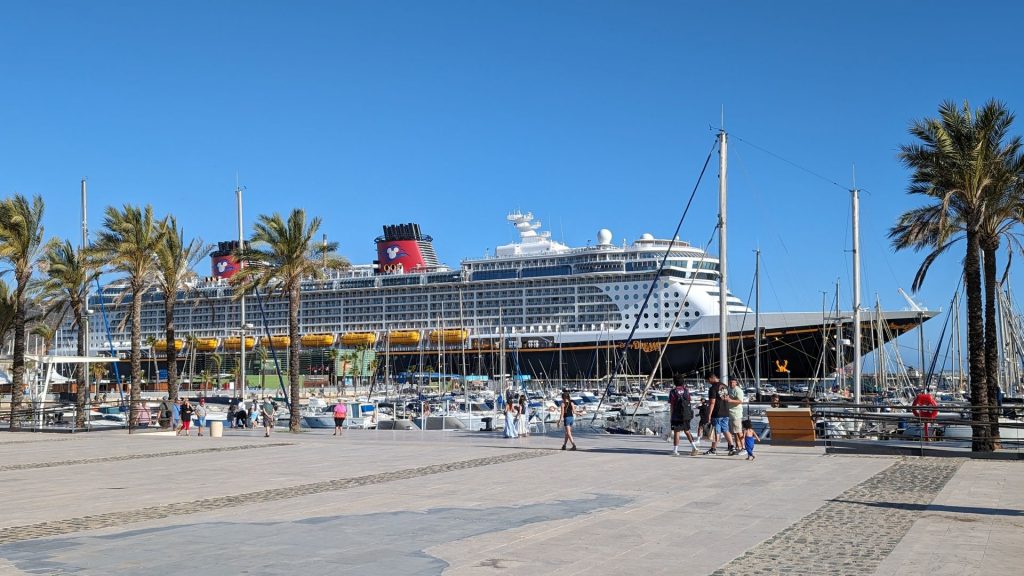
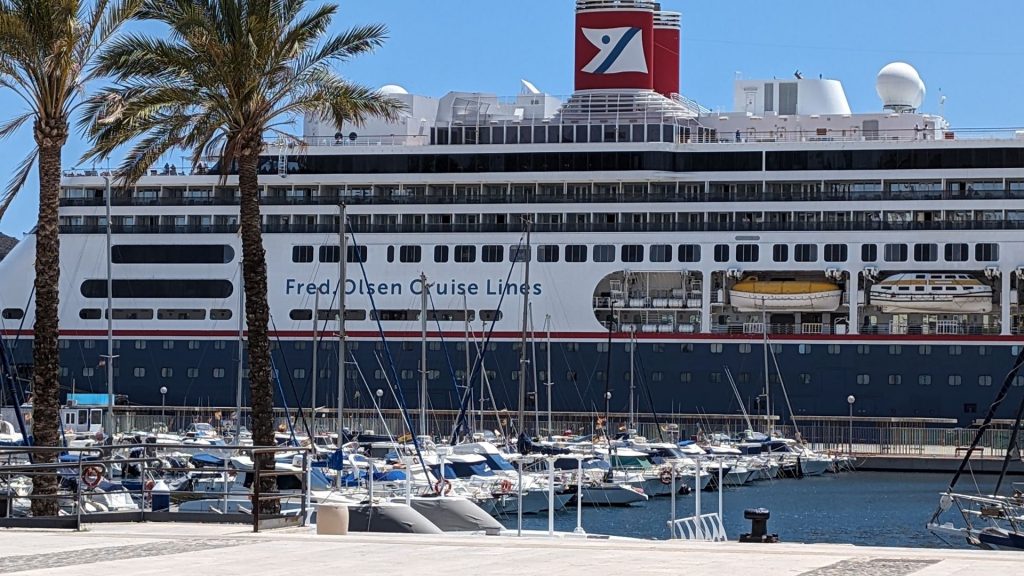
The plexiglass for our new windows finally arrived and it was time to haul out Seahike. It was now May 16, and we’d arrived in Cartagena on April 18. We NEVER expected to spend so much time here, but we needed to get this stuff done and this was a good place to do it, as it was affordable and offered quality work.
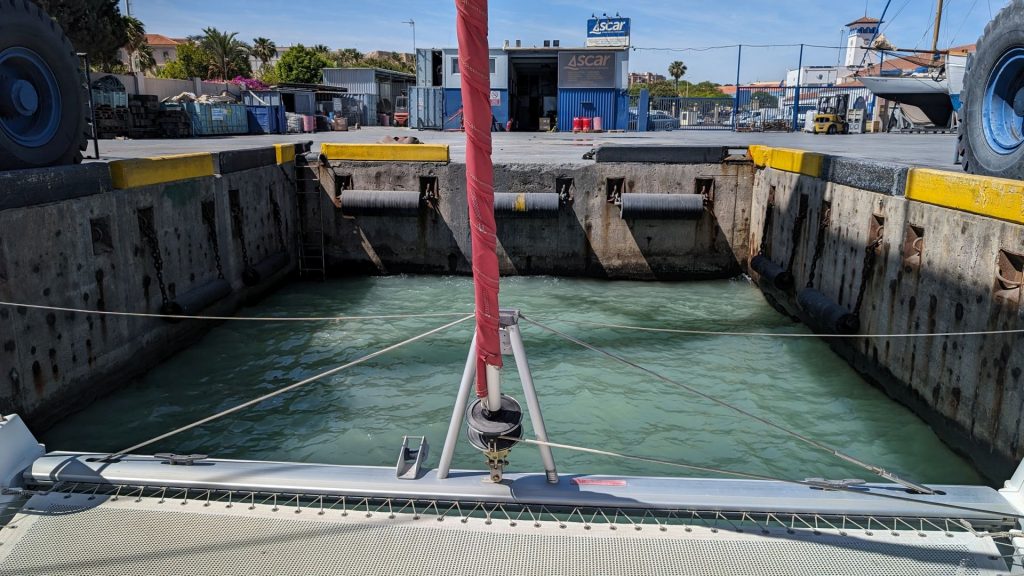
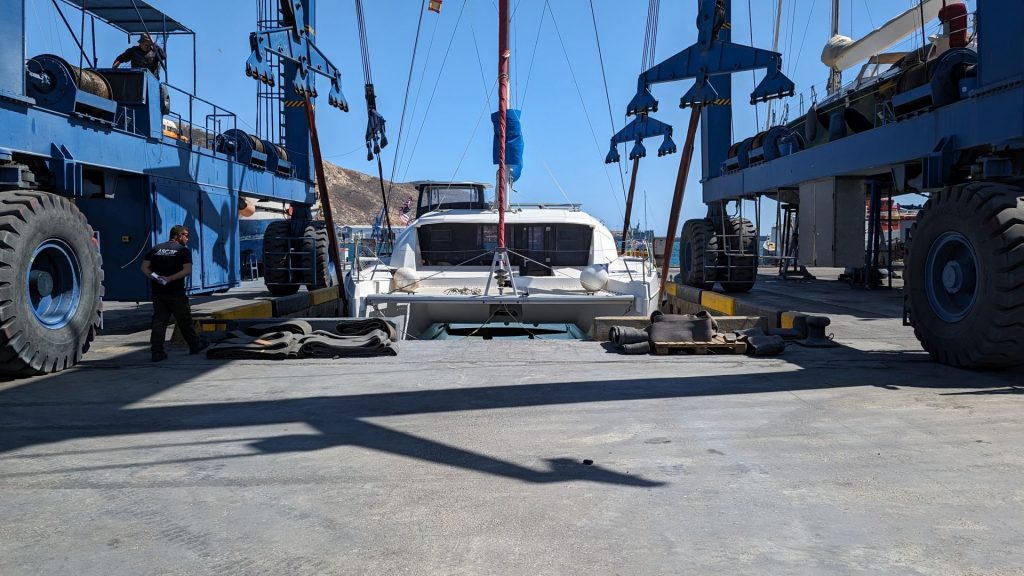
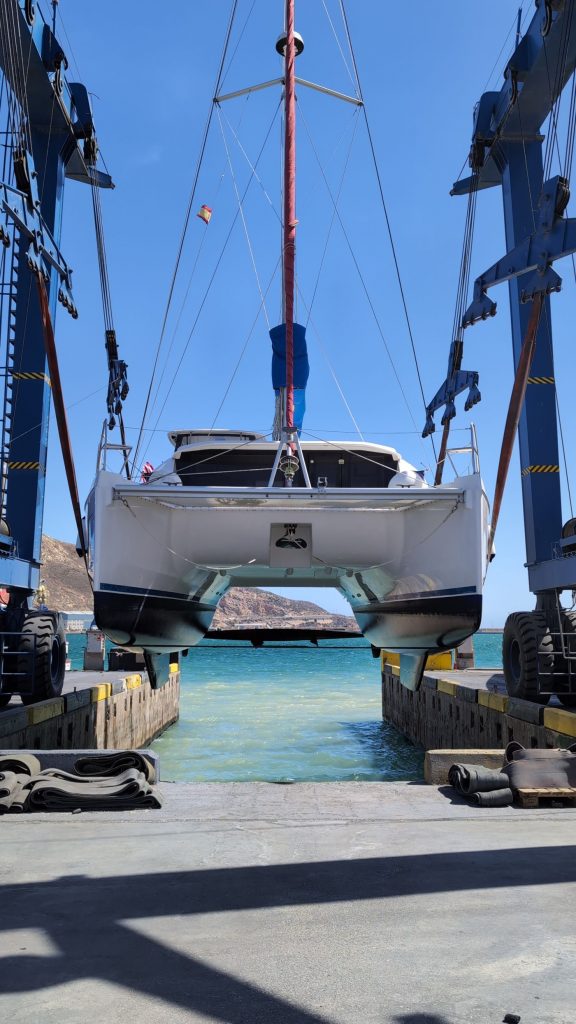
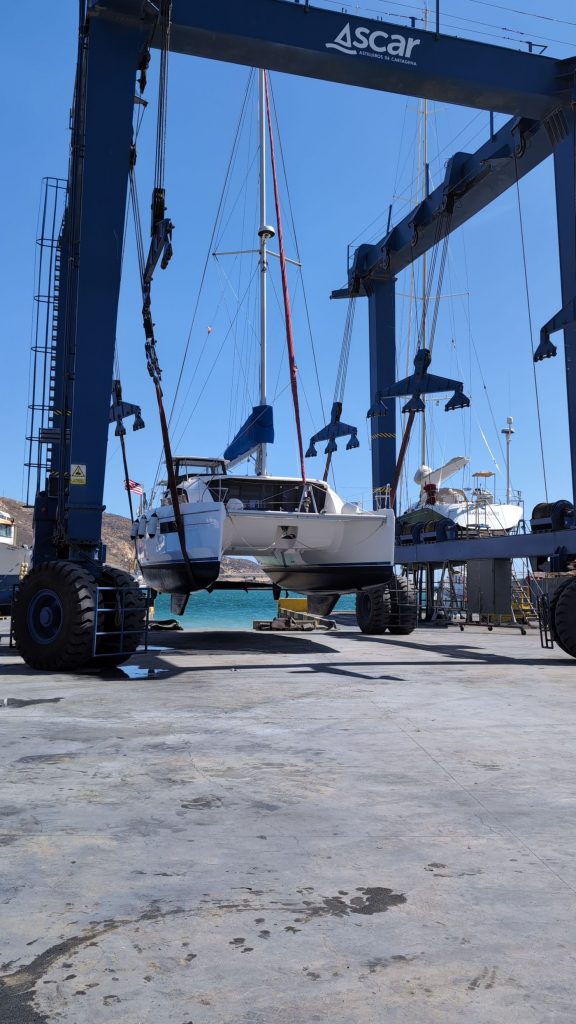
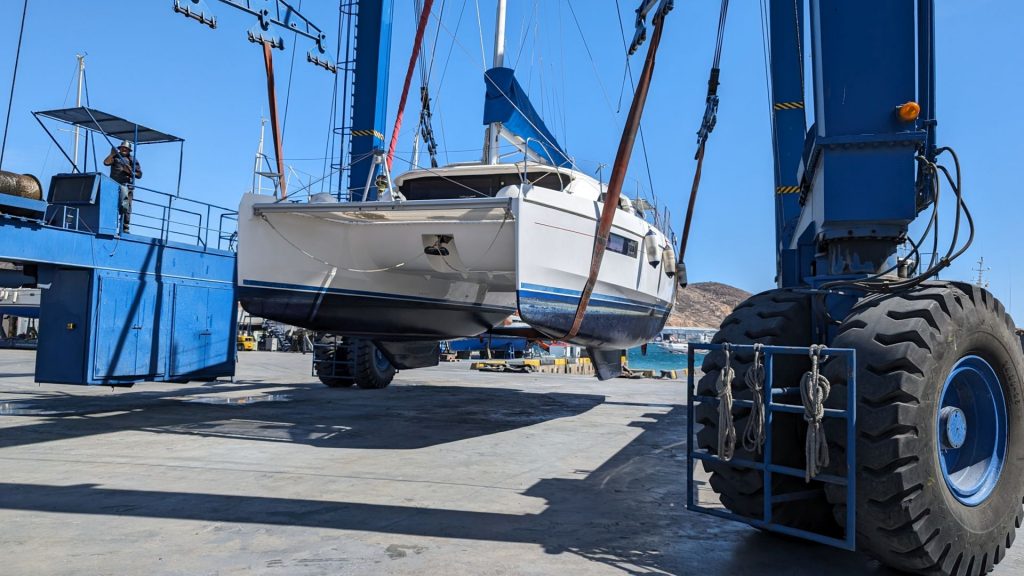
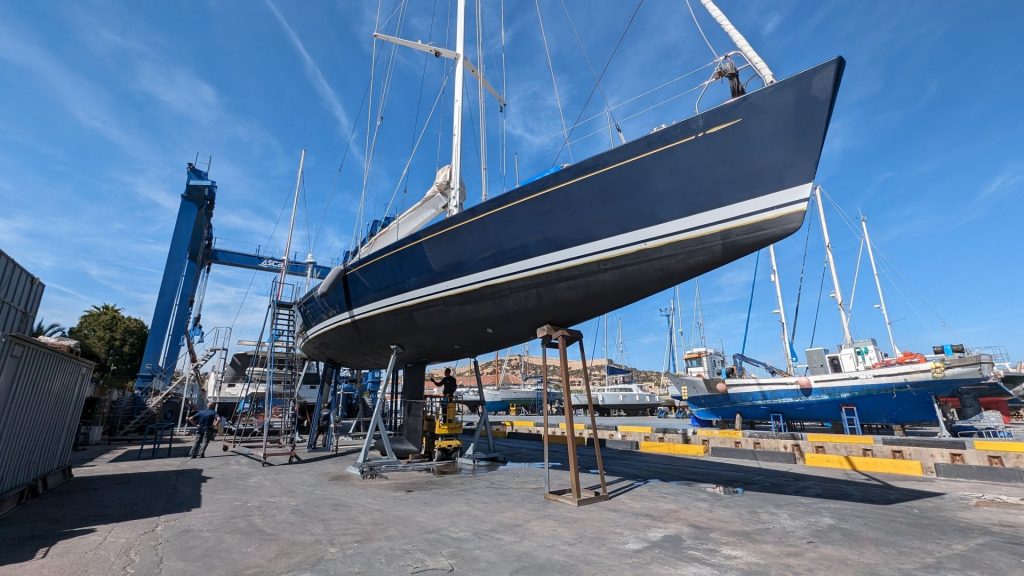
Check out the keel and rudder on our neighbor’s boat!
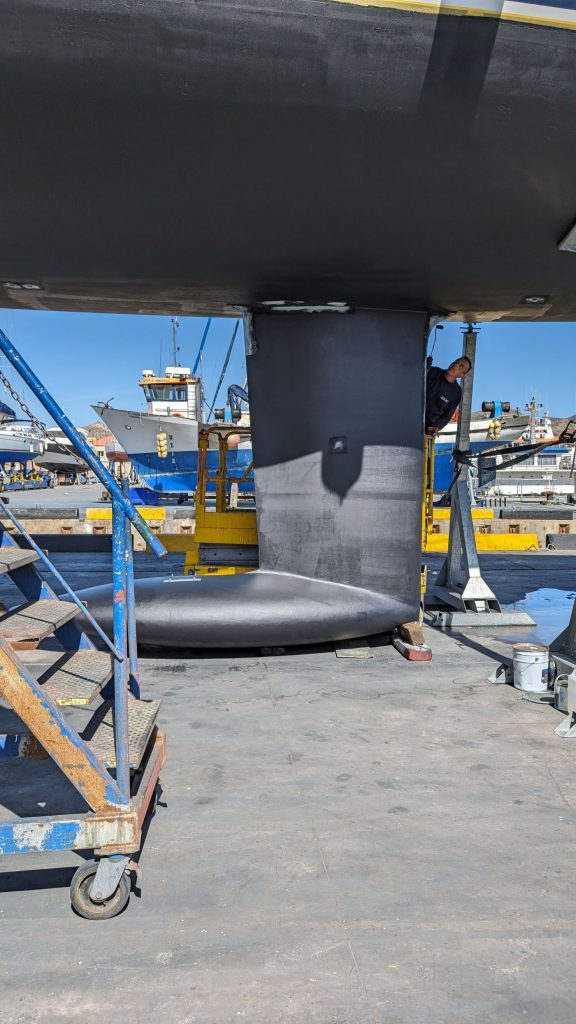
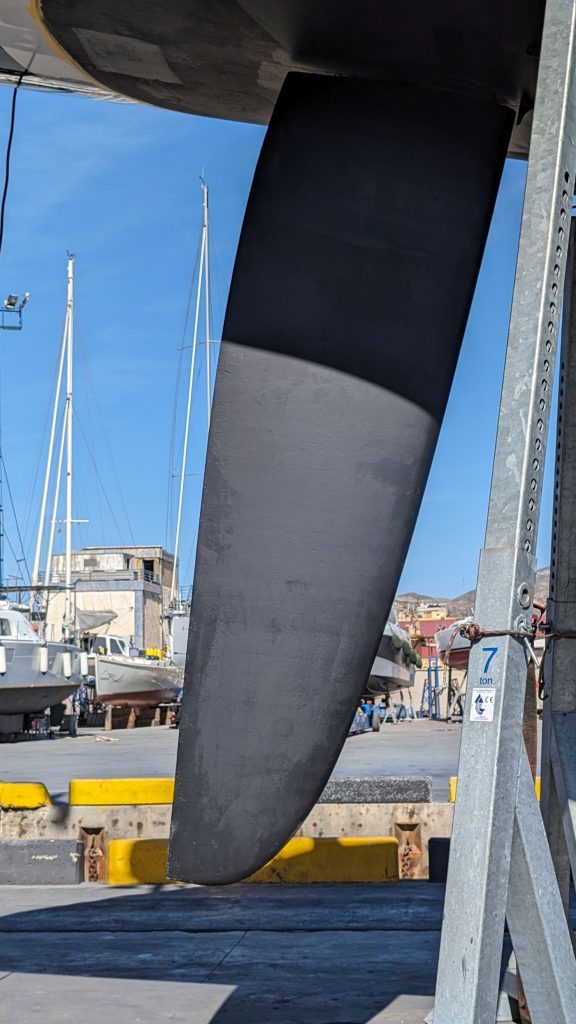
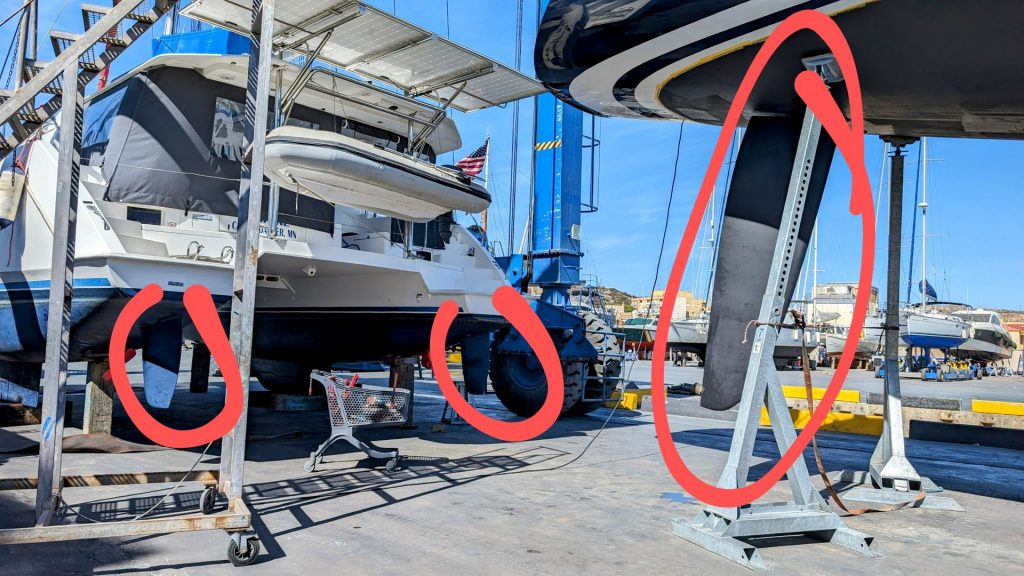
We decided to stay on Seahike while she was on the hard. My only concern was how far I’d have to walk to get to the bathroom. It turned out to be 270 steps. Yep, my phone counted them for me. Plus they were private and had a nice shower, so I was fine.
We couldn’t cook on the boat because we couldn’t do dishes on the boat. So we ate out a lot. But we also bought paper plates and cups and wooden forks, spoons, and knives, so we could at least make and eat sandwiches and open cans of fruit and such.
Seahike spent two weeks on the hard. This is what Seahike had done in Cartagena:
— new lithium batteries installed
— new seals and O-rings for the sail drives
— two new propellers
— inspected standing and running rigging
— new furling line for the genoa
— repaired injection pump for the starboard engine
— new anti-foul paint
— new windows and door forward of the galley
— new window in the front port cabin
— repaired window in the aft starboard cabin
There goes our retirement fund!
Here are some of the things we did while waiting for Seahike to get “all better.”
Day Trip to Lorca
Lorca didn’t knock my socks off, but that was probably because a couple of the cool things we wanted to see were closed. I think I would give it a thumbs up if we’d added those sites. Even without those, they certainly have some pretty buildings and gardens. And a castle.
The castle was kind of fun. I particularly liked the giant chess game and the sundial. Up until the 9th century, sundials were the only clocks. The sundial itself is pretty cool, but the plaque that suggested what the foot soldiers did was also interesting. Here are a few snippets:
— He rises with the sun from his straw bed. If he is lucky he will have a piece of bread spread with lard for breakfast. He says a prayer or two. He might splash his face with some water by way of a wash, except in winter when it’s too cold even for this.
— He practices with the sword and the spear every day. He cannot afford to lose his skills or his good physical condition. He practices feints, dodging tactics, ducking lounges, sword blows, his aim with the crossbow . . .
— If he has a day off (from guarding the castle) or has no military duties he might go to the market to buy something or get a letter written by the scribe.
— He often helps his family to cultivate land. His weapon is always in sight, but he changes them for a plough, farmer items or a shepherd’s crook.
— He eats with the other soldiers. The mayor has ordered a companion to cook the meal, usually some bread with a piece of meat, eaten using his hands.
— He takes a siesta.
— He concentrates on the duties assigned by his bosses: repairing shields and armors, darning pennants or protective leatherware (laces, gloves and gauntlets), fixing drums, cleaning trumpets . . .
— He is ordered very often to help as a laborer somewhere in the Castle: he could help clean a cistern or repair a section of the wall.
— His beard is getting very long and even gets in the way when he is eating, so he goes to see a woman or another soldier who has some skills as a barber.
— Dinner will be a bowl of soup or a vegetable broth. Afterwards he has permission to go to the tavern and finish the evening playing dice or cards, drinking, and betting on cock fights.
Whew, what a full day!
And now, pictures from Lorca. We will start with a cool fountain we saw and a picture of the exterior of the Church of San Francisco. Sadly, we were not able to see the interior. I’ve seen pictures of it – it is beautiful. If you would like to see more pictures or learn more about it, check out this website: https://murciatoday.com/the-convent-church-of-san-francisco-in-lorca_123218-a.html
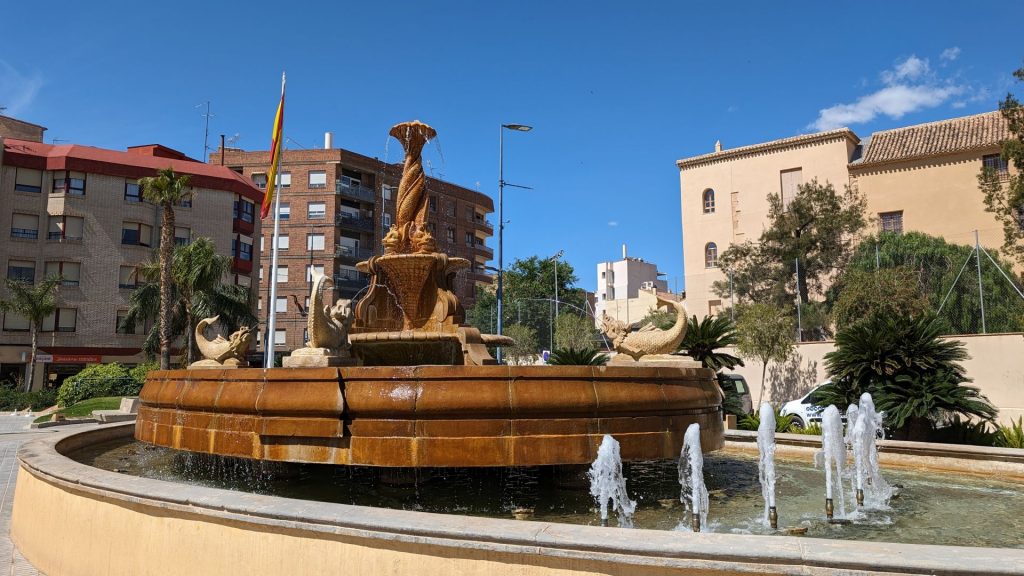
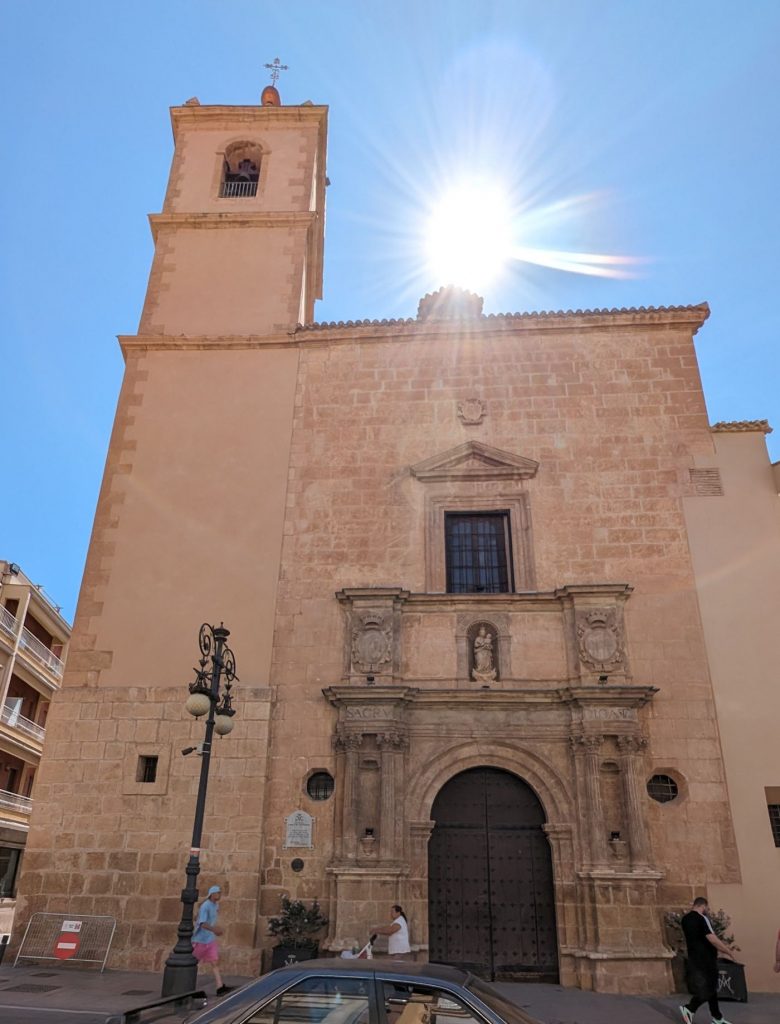
The castle is next.
La Fortaleza del Sol (The Castle of the Sun)
One of Spain’s largest castles (640 meters long and 120 meters wide), the medieval Castle dominates the city of Lorca. Two rectangular towers catch the eye first; the older Alfonsi Tower and the Espaldón Tower are connected by defensive walls, which total more than 3,000 feet in length. The defensive structures made the town and the fortress an impregnable point on the southeast part of the Iberian Peninsula. Built between the ninth and 13th (or 15th?) centuries, the castle served Moors and Christians alike as a fortress against the enemy of the respective times, mostly each other.
As per usual, the castle is on a hill. It was a pretty warm day, so the climb up was also quite warm.
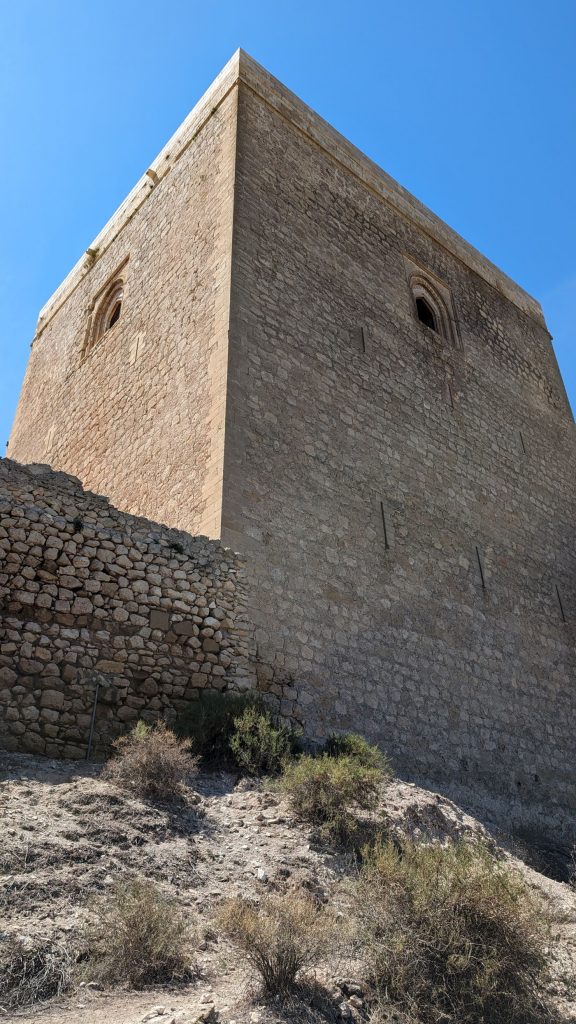
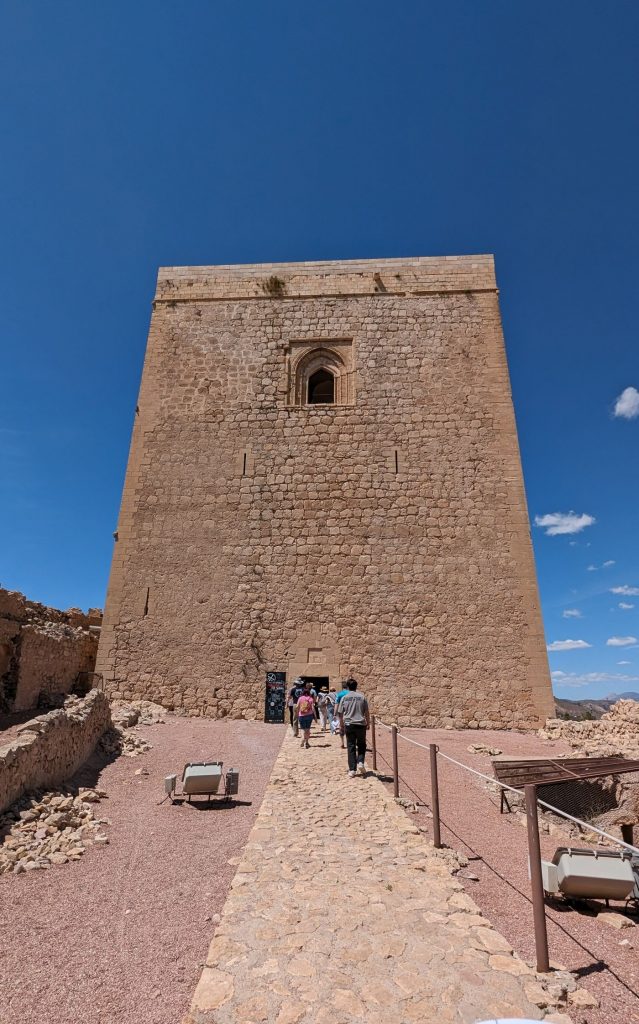
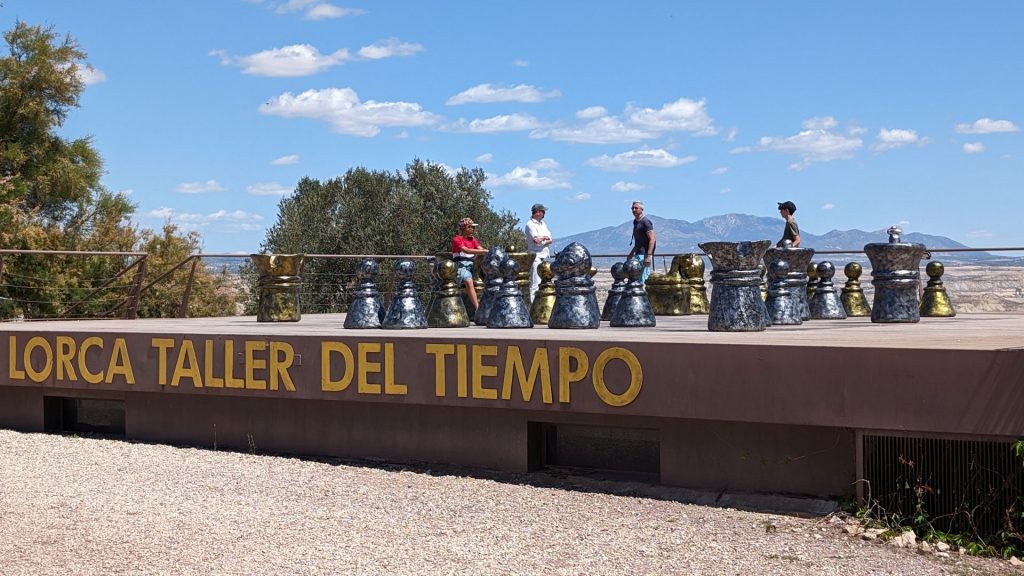
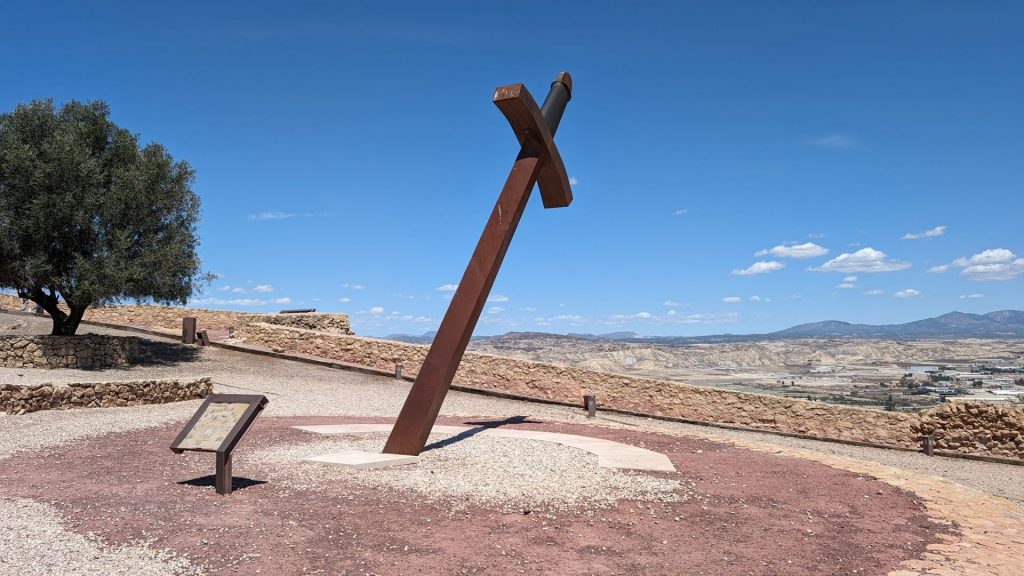
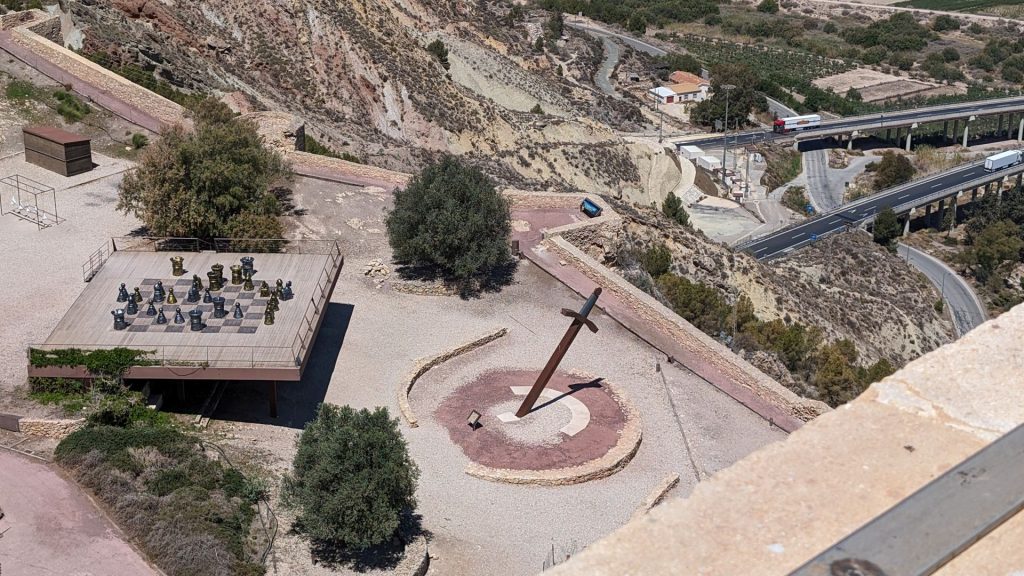
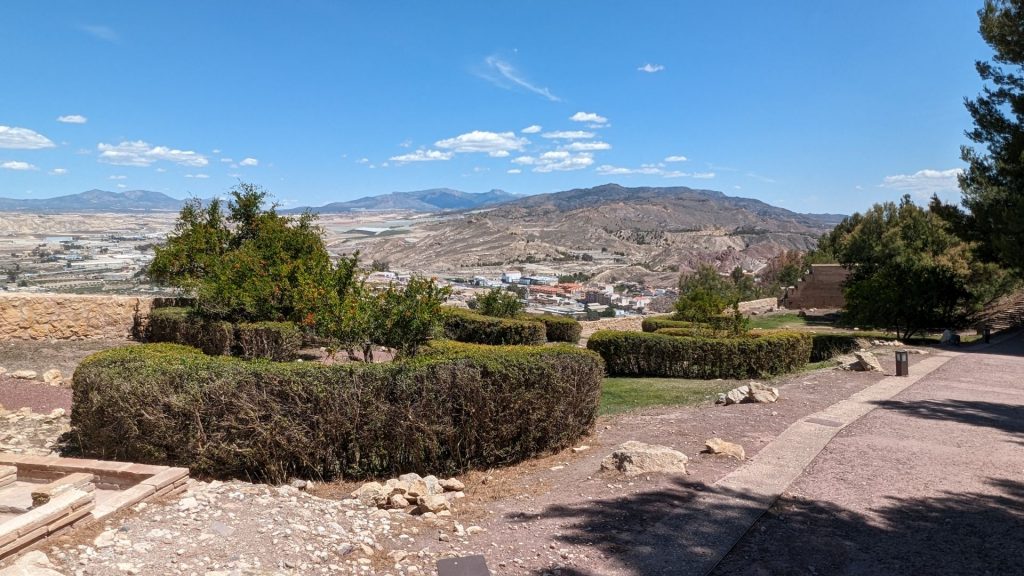
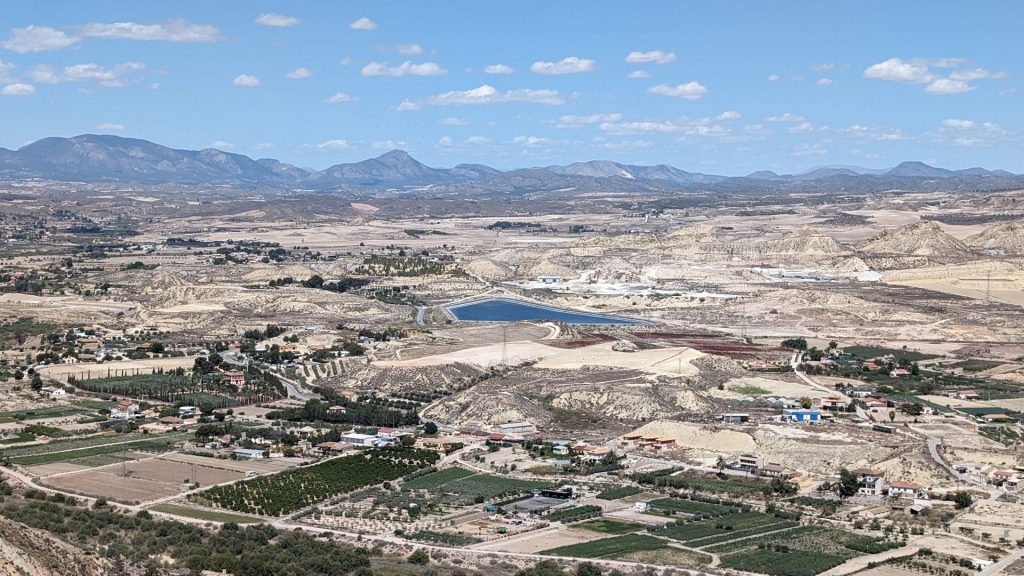
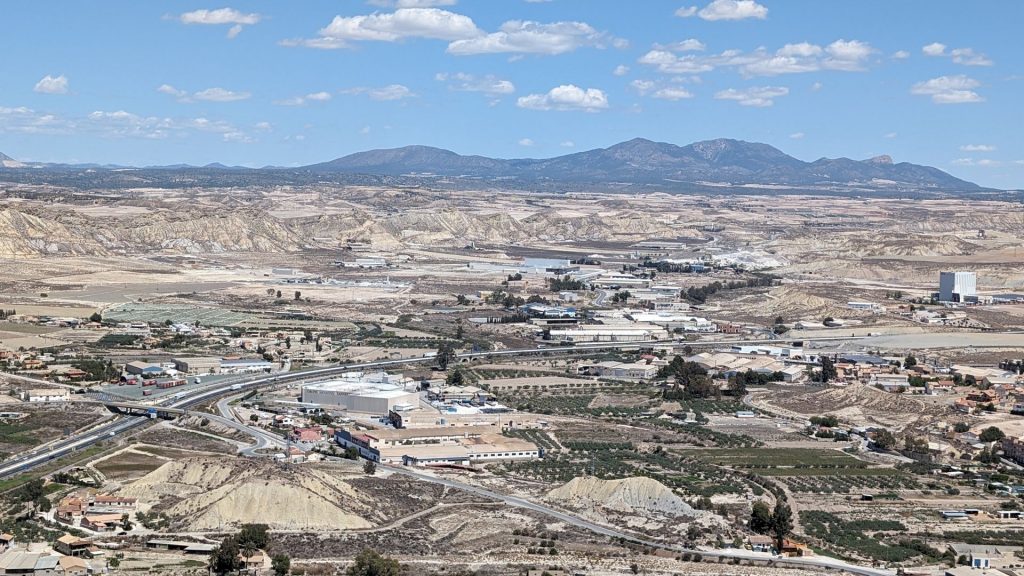
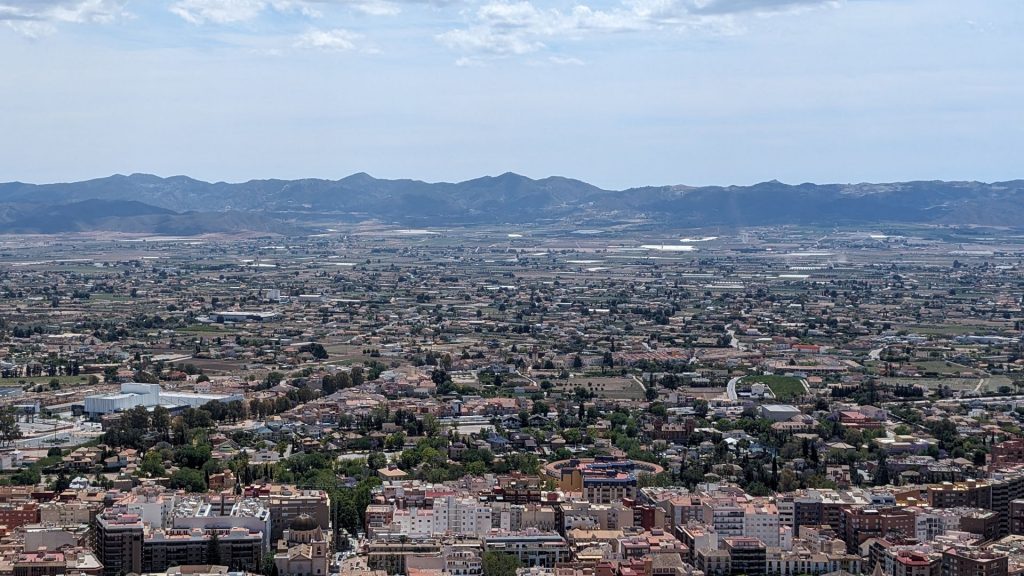
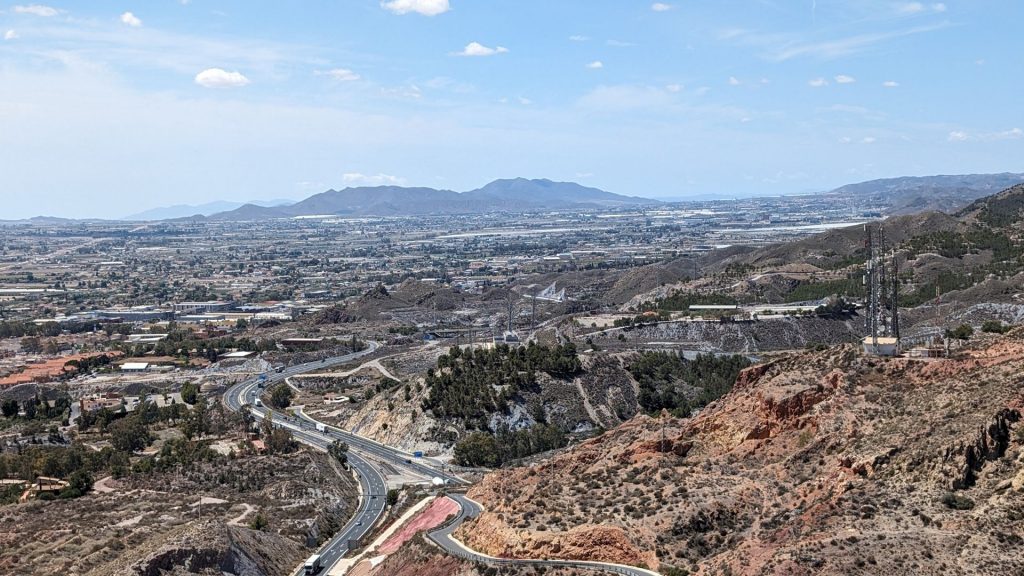
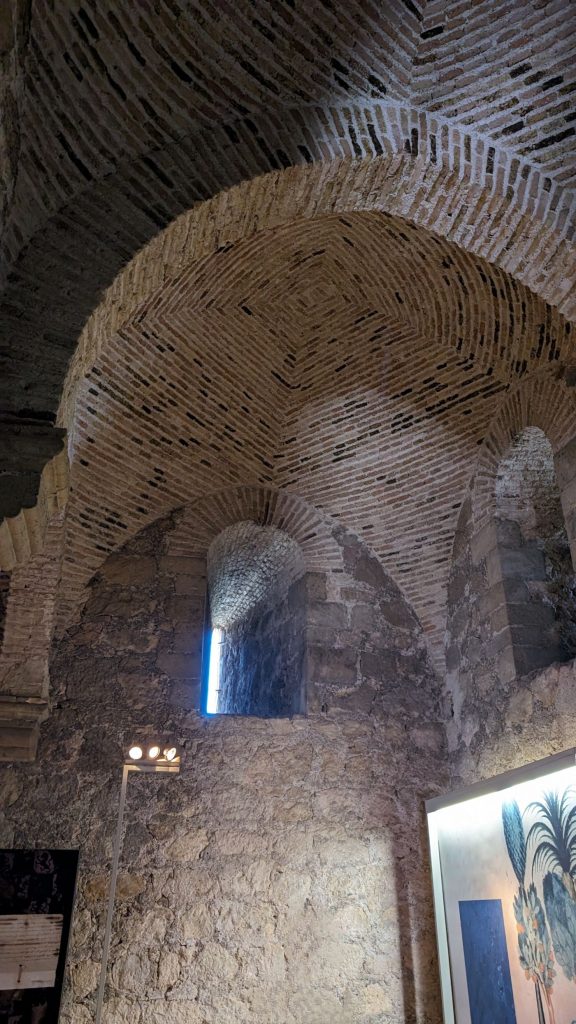
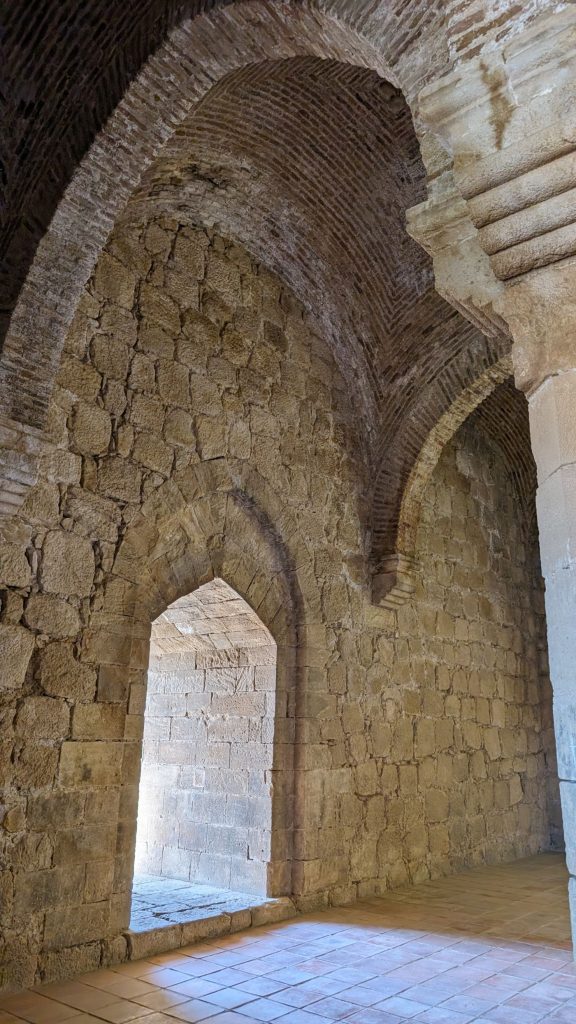
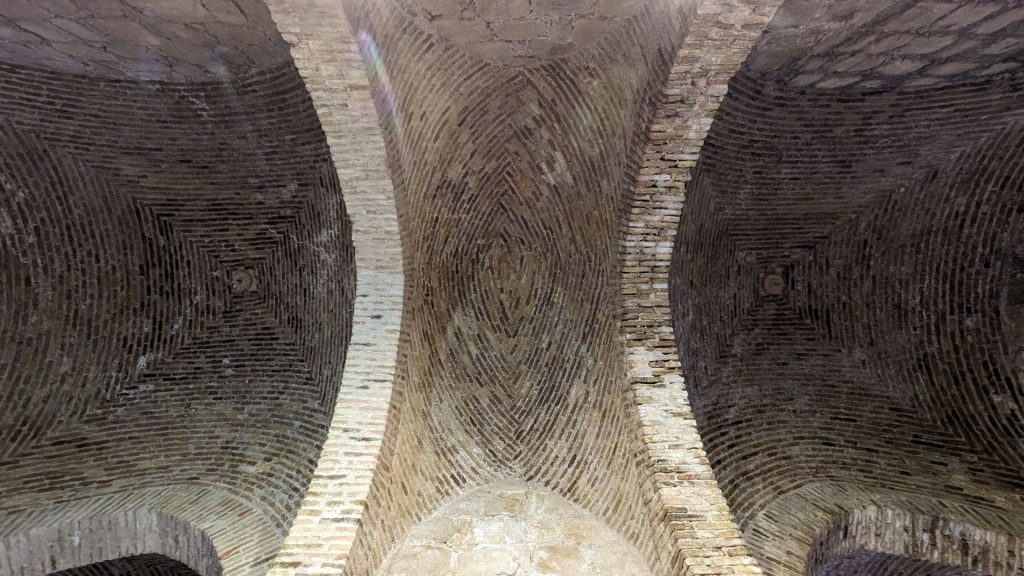
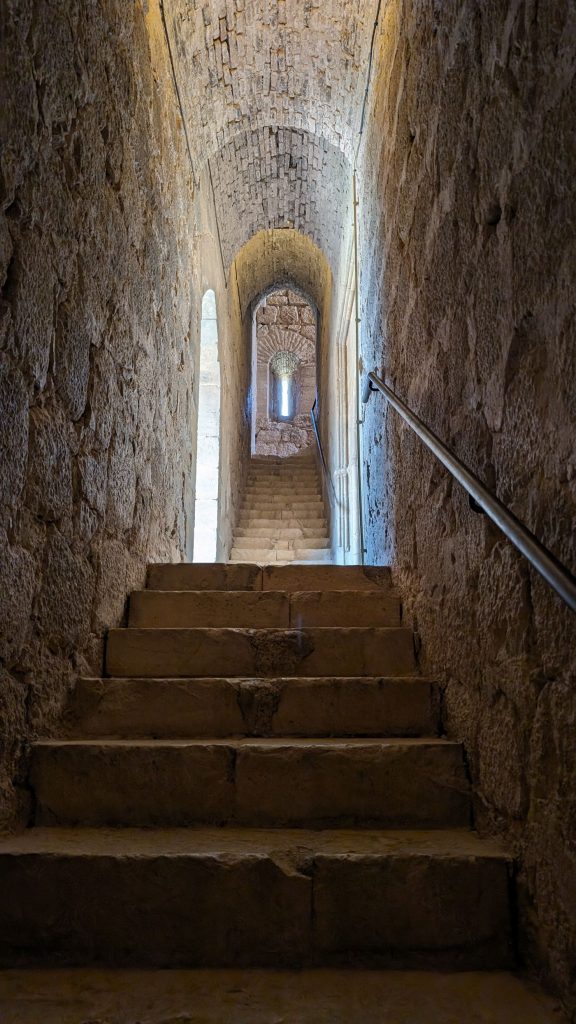
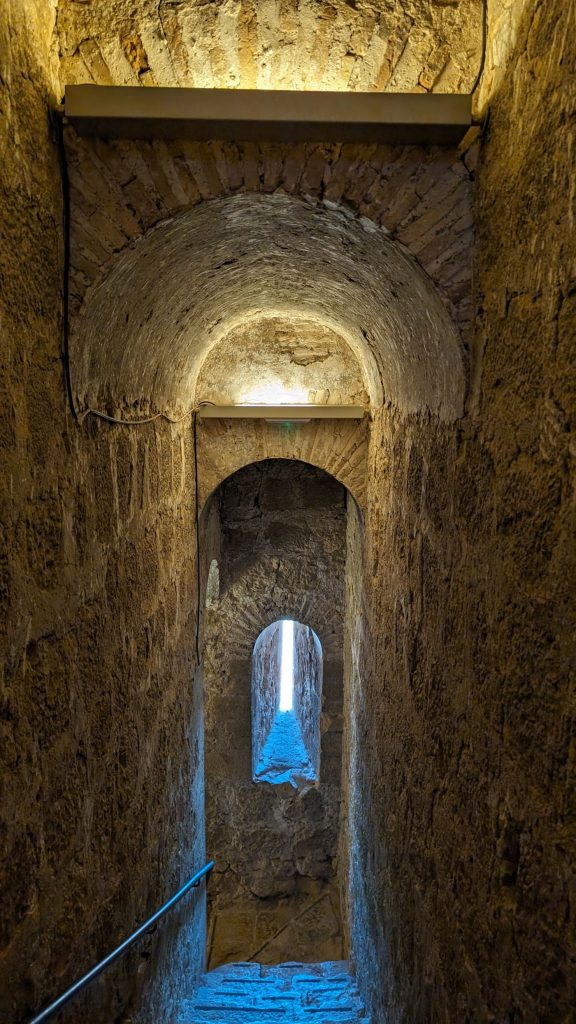
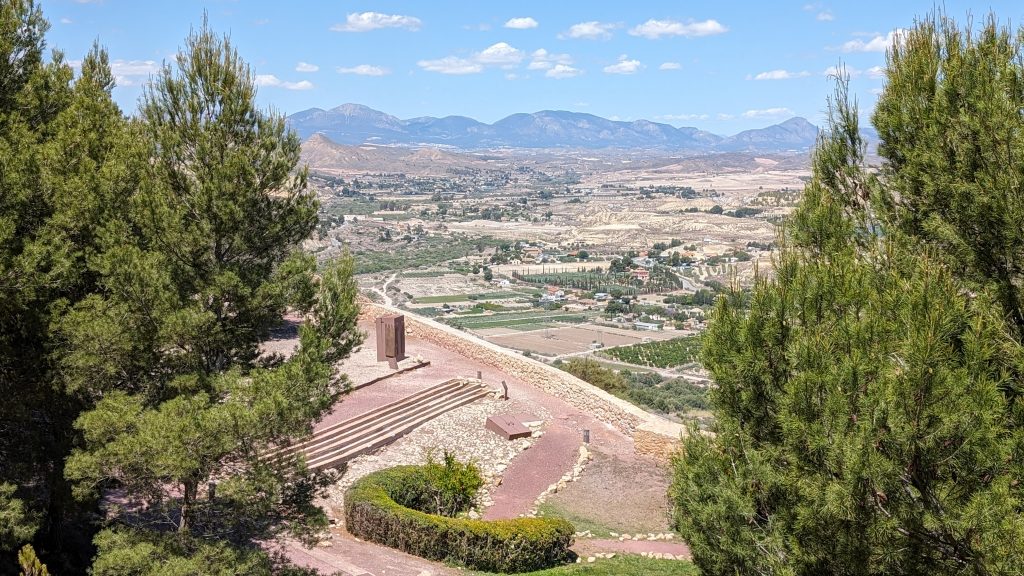
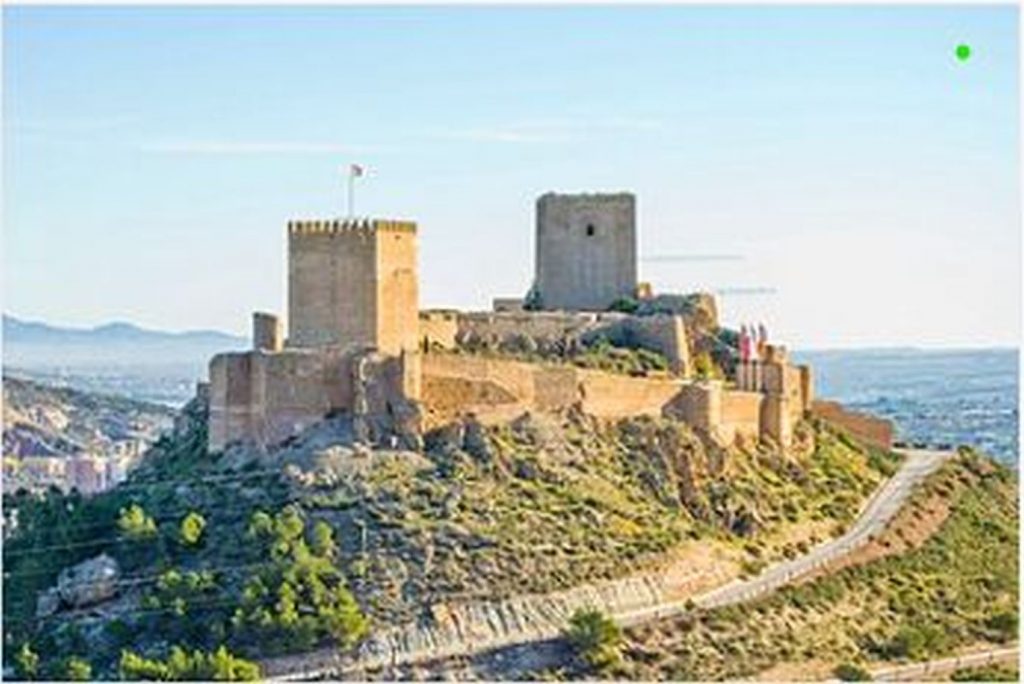
One part of the castle that isn’t too exciting to look at is very interesting simply due to its existence. The Espaldón Wall is one of the most significant archaeological remains of La Fortaleza del Sol. It was built at the end of the Almohad period (1121–1269). Its dimensions – 30 meters long and over eight meters high – show its defensive importance. It divided the castle into two areas: the military zone on the west, more vulnerable; and the civil zone to the east. Both enclosures were connected by an L-shaped gate, practically invisible to oncoming enemies.
Here are three pictures of the wall from different vantage points.
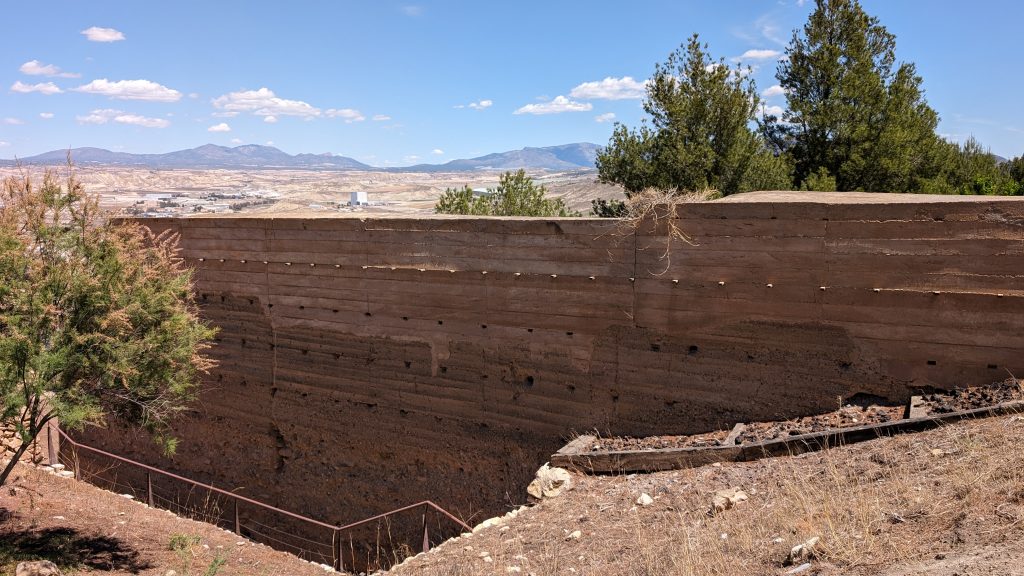
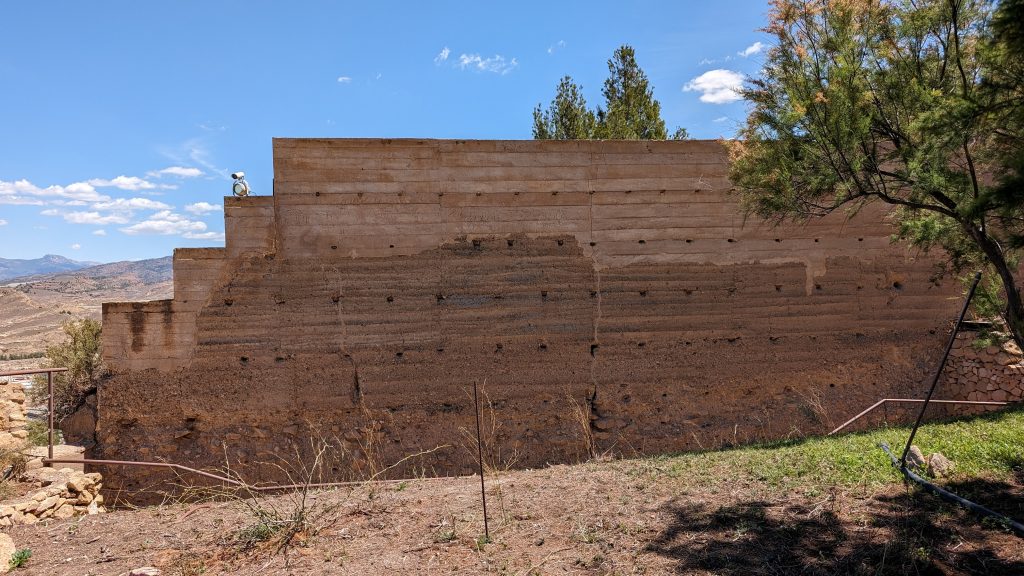
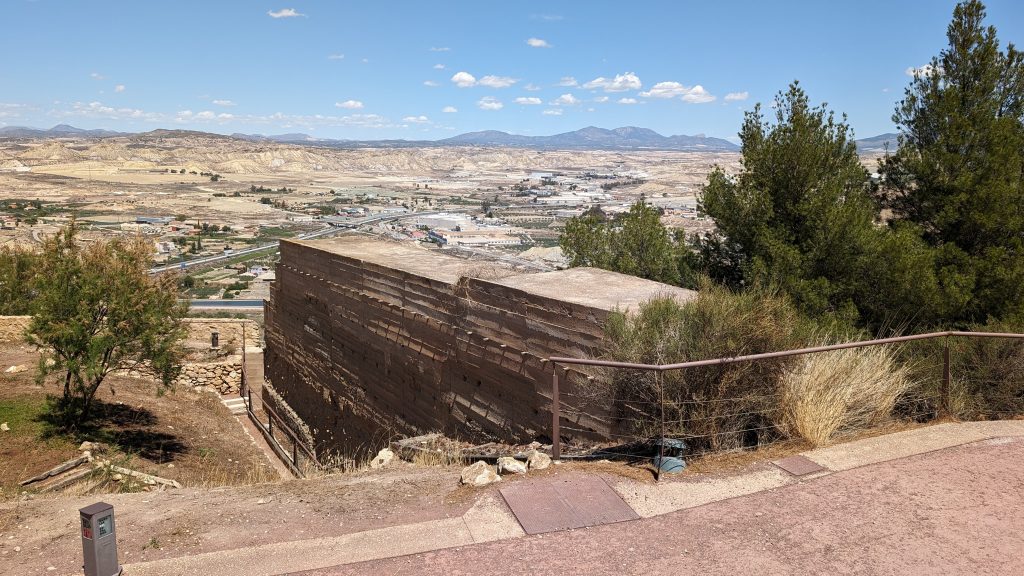
We viewed the Collegiate Church from the outside. It’s a curiosity that Lorca’s most famous church is dedicated to St. Patrick, the patron Saint of Ireland. It’s also the only church in Spain that is. The reason? This being Lorca, it was a battle, of course—to be precise, the Battle of Alporchones, which was fought between the Moorish Caliphate of Granada and the Catholic Kings and won by the latter on St. Patrick’s Day on March 17, 1452. The collegiate church, which has a Baroque façade and Renaissance interior, wasn’t finished until 1533. Located on Lorca’s Plaza de España, the cathedral-sized church forms part of several palatial buildings featuring the same baroque design, typical for Lorca.
The exterior is stunning. We spent quite a bit of time admiring it.
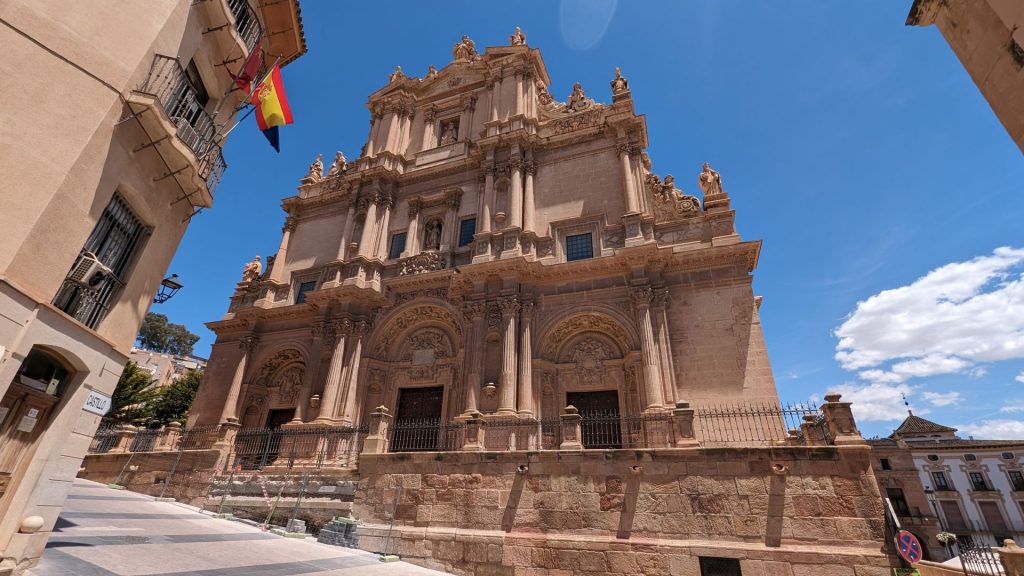
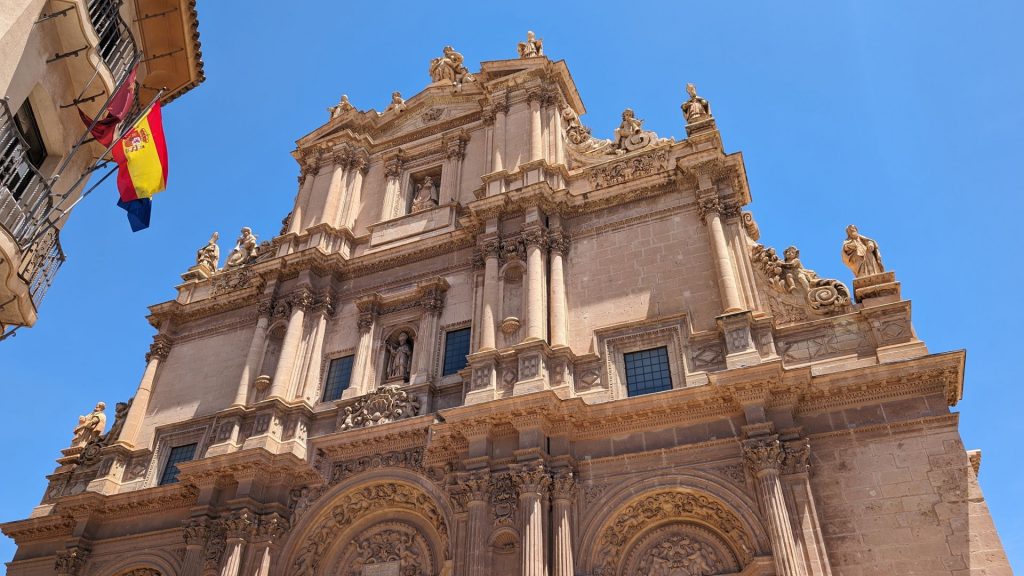
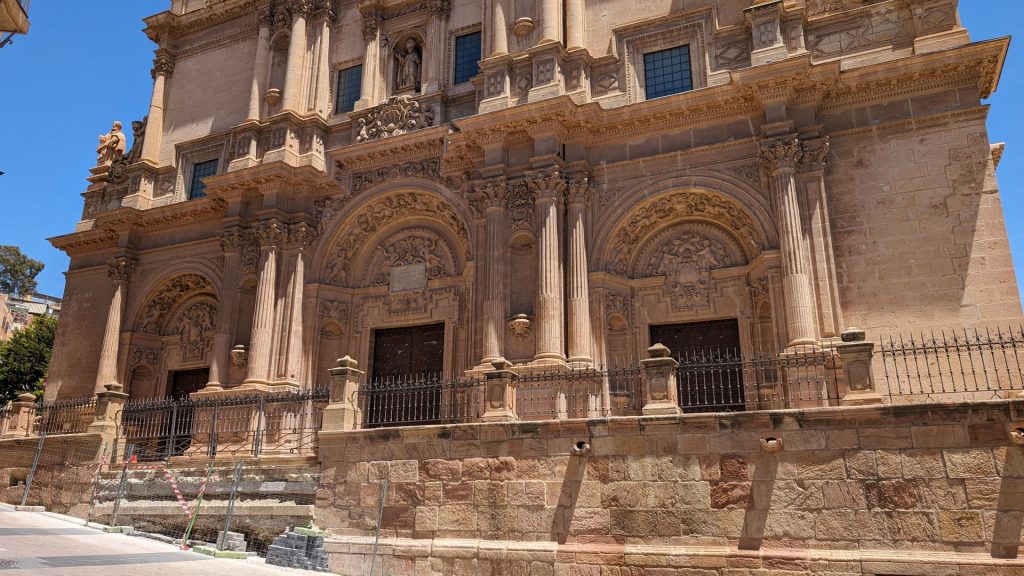
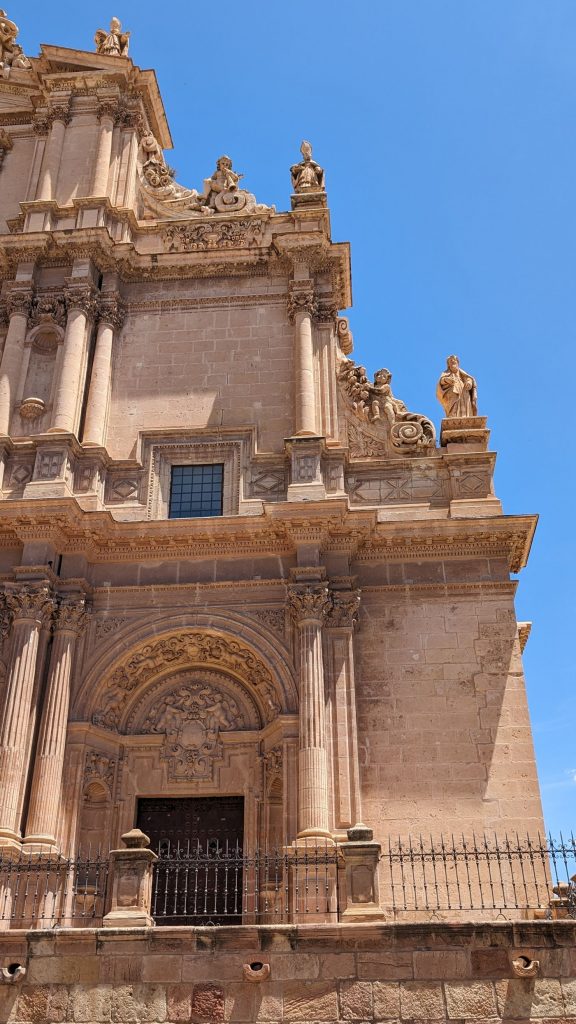
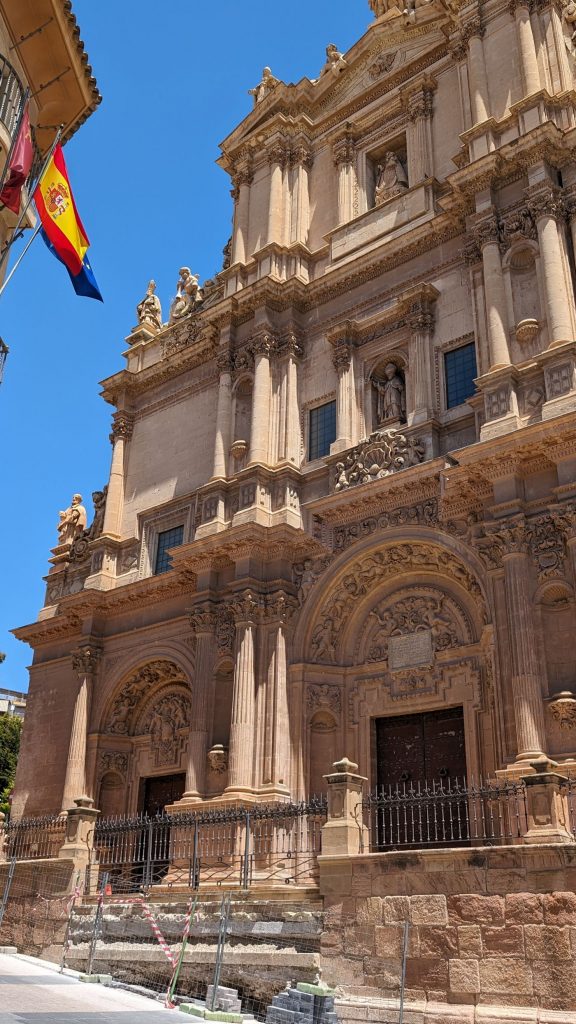
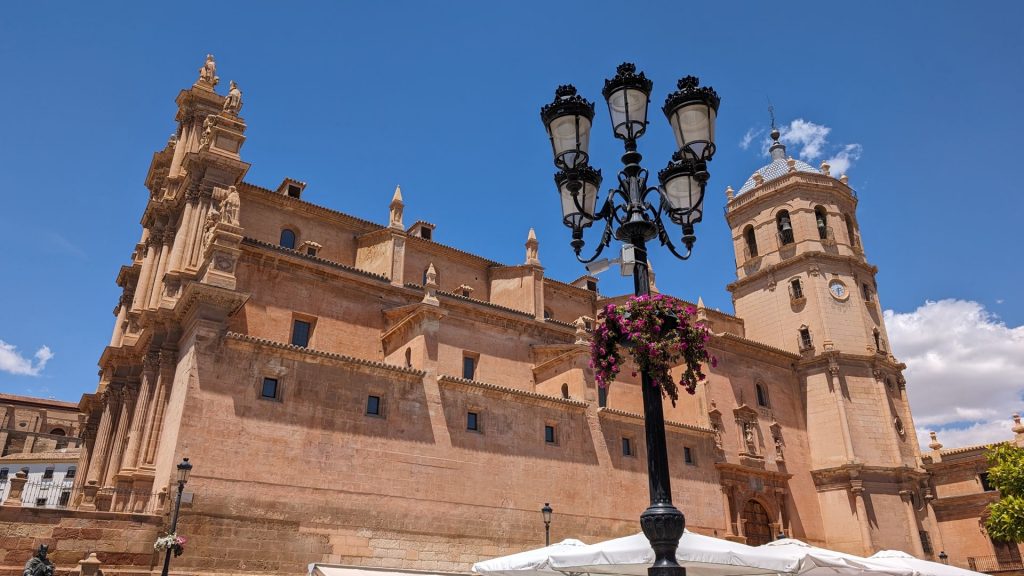
It was time for lunch, so we walked to Plaza de España. This is a lovely and big square surrounded by beautiful buildings, including one of the most prominent buildings on the square, the Town Hall (Ayuntamiento de Lorca). The Town Hall features a Neoclassical façade with elegant columns and ornate detailing.
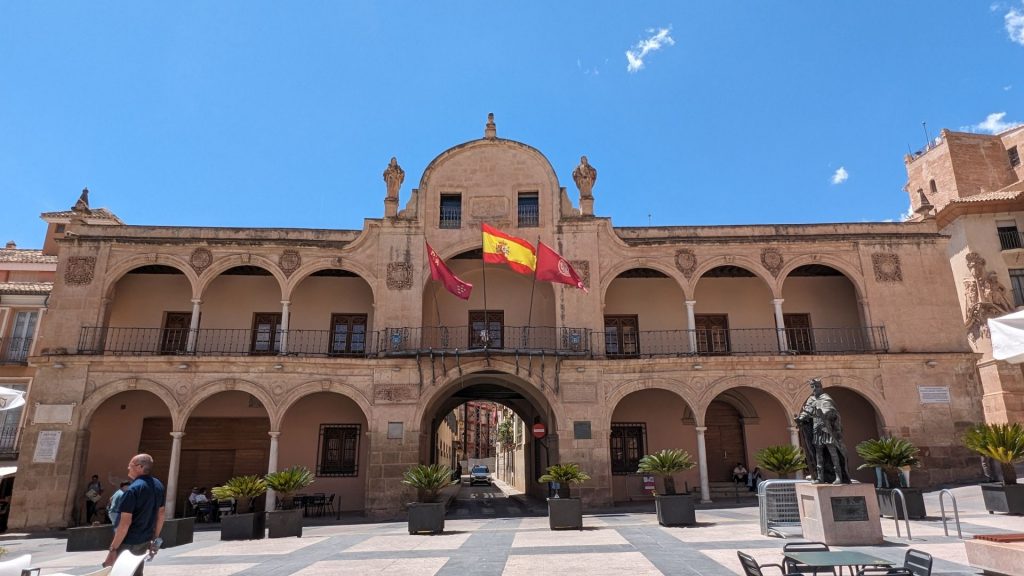
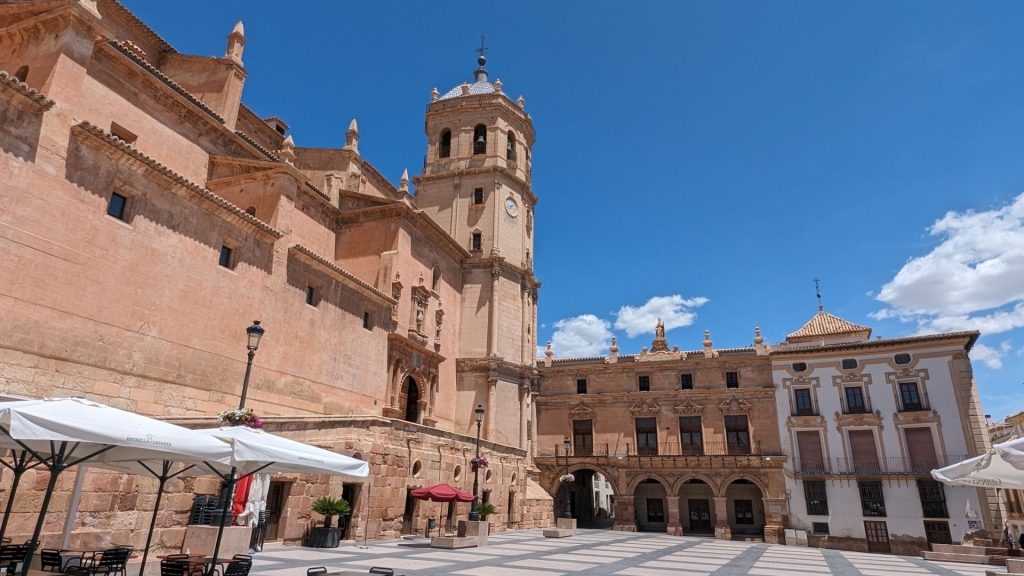
Since we were in Spain, we obviously decided to have lunch at an . . . Irish Pub. They were only serving small bites, so we ordered five. . . . and beer. The little tower of food is made of mushrooms. The three salad looking things are salads. My memory is fuzzy but I think one was a potato salad, one was seafood, and the other was ???, yeah, I don’t remember. The other thing is a slice of bread topped with a deep fried meaty thing (I don’t remember exactly what it was) with a big pepper on top. What I remember for sure is that it was all very good!
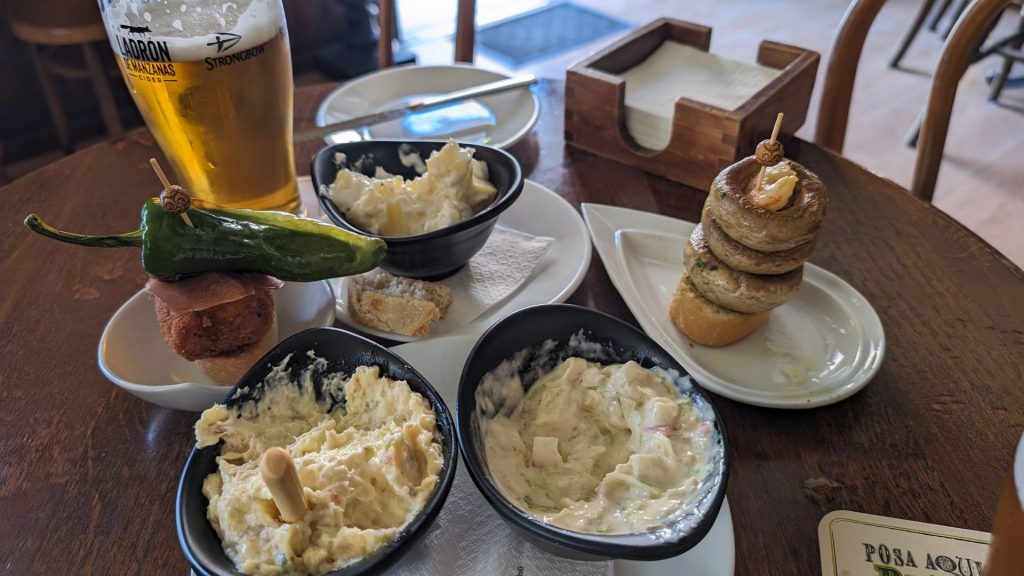
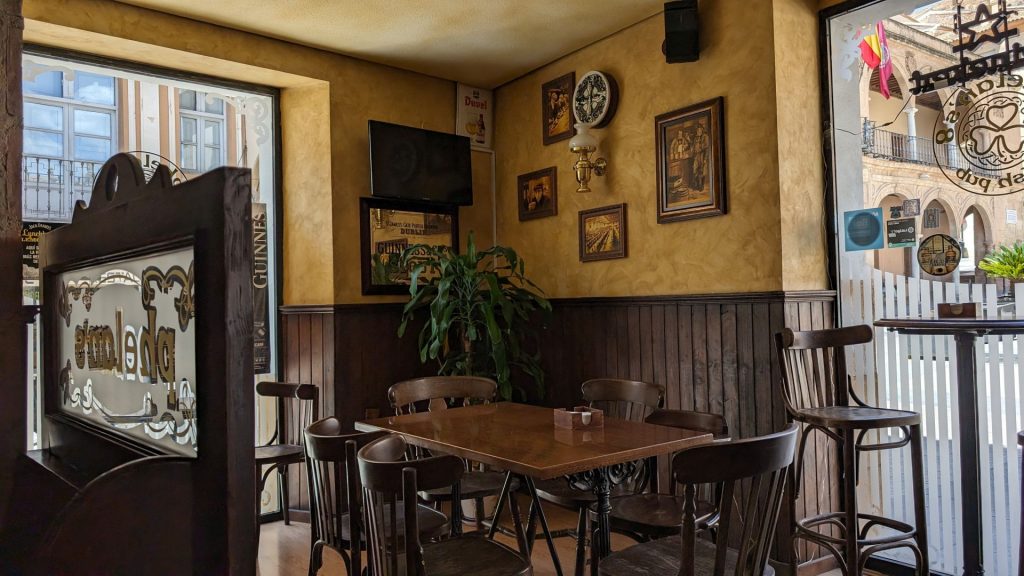
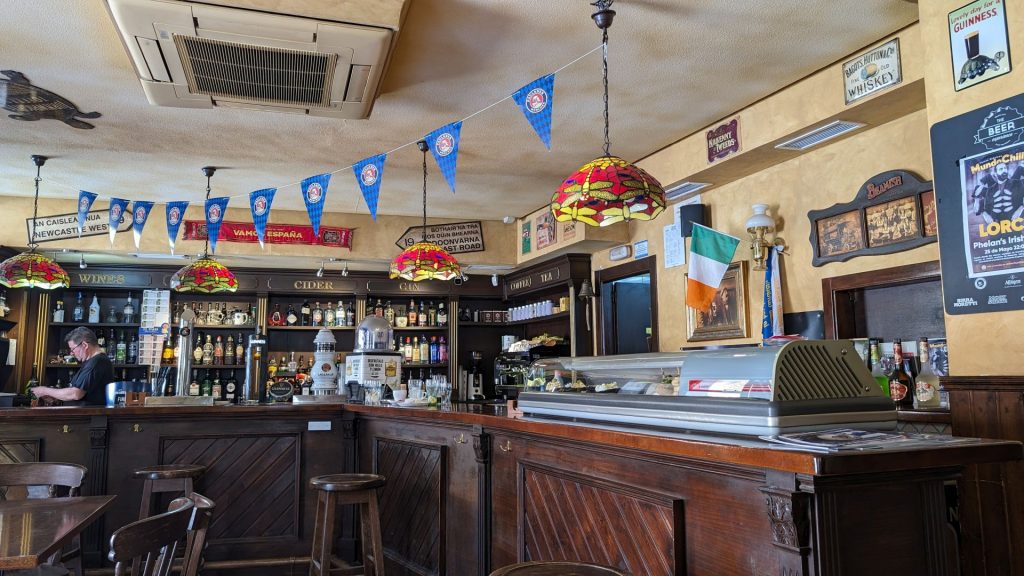
We were now on our way back to the station, but we purposely passed some other gems along the way.
This is the exterior of the Guevara Palace (Palacio de Guevara). Another architectural gem, it boasts a Renaissance-style façade. It houses the City History Museum, which we did not visit. But we did spend an appropriate amount of time marveling at the exterior.
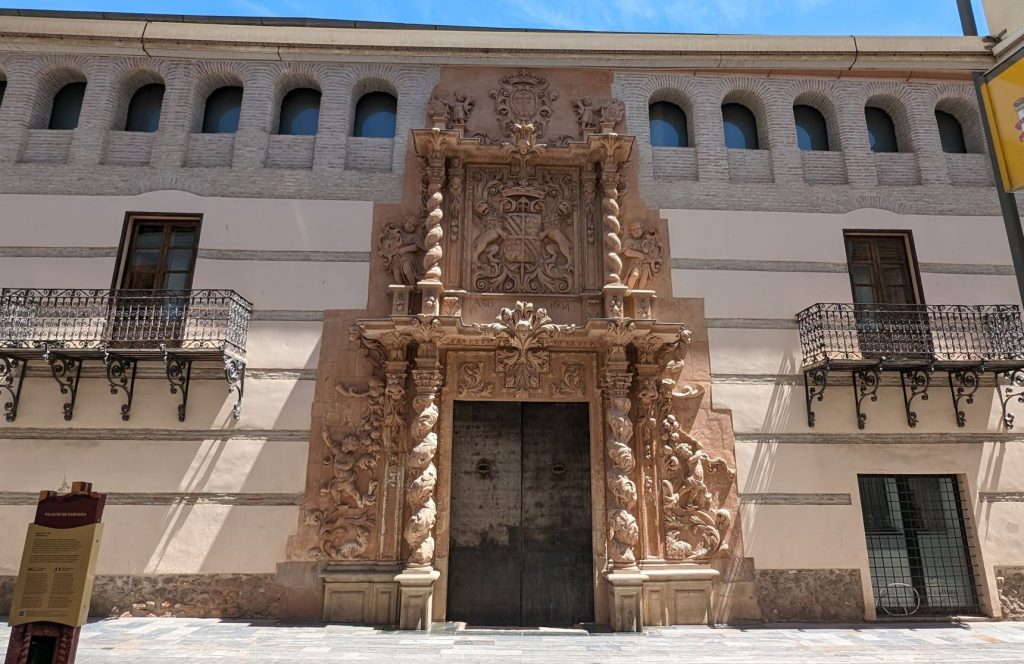
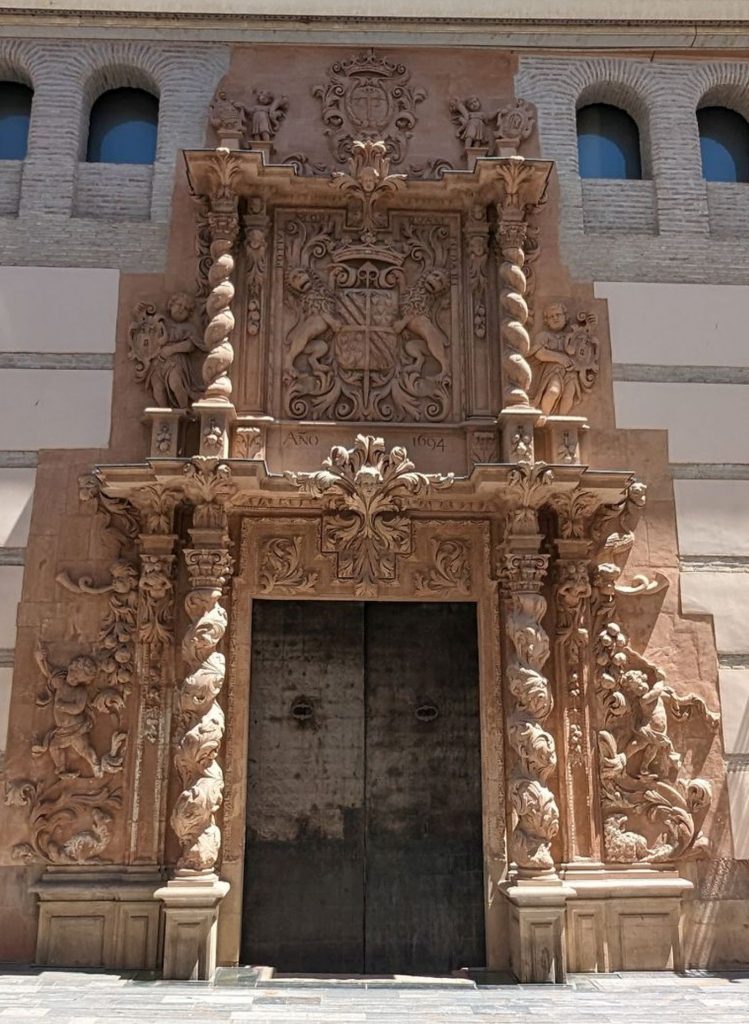
This next building is the Palacio Huerto Ruano. It, too, was closed (we made the grave mistake – really!! – of visiting on a Saturday), so we just viewed the exterior, again with a sufficient amount of time dedicated to the task. I wish we’d been able to go inside.
The Palacio Huerto Ruano is reportedly the best example of Modernist and Eclectic architecture in Lorca. Is one of the more recent palatial residences built by the wealthy and the aristocracy in Lorca, and dates from the 19th century, when Raimundo Ruano brought back to the city a taste for the architecture and culture of Edinburgh, where he had been away for a while in the course of his work.
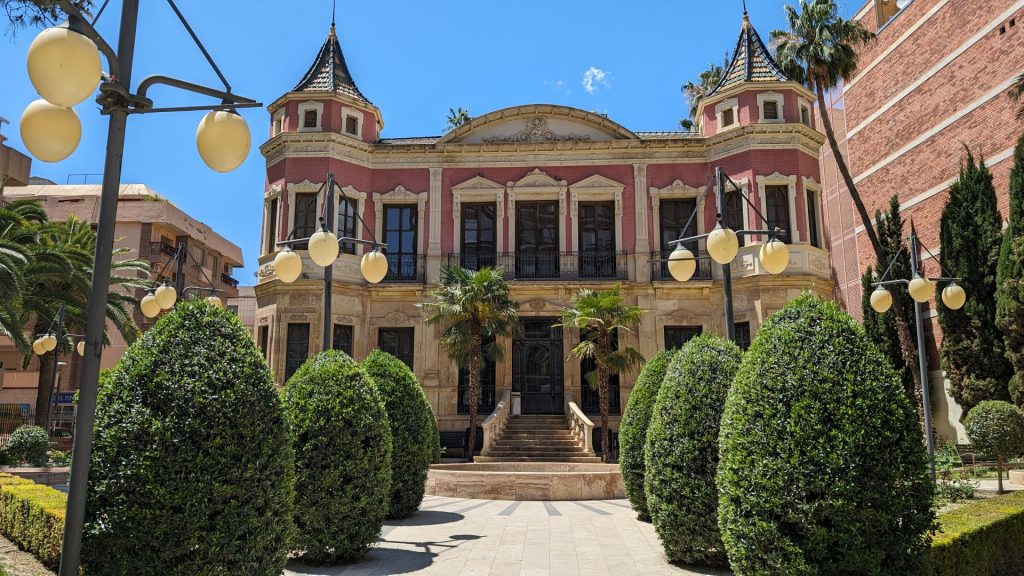
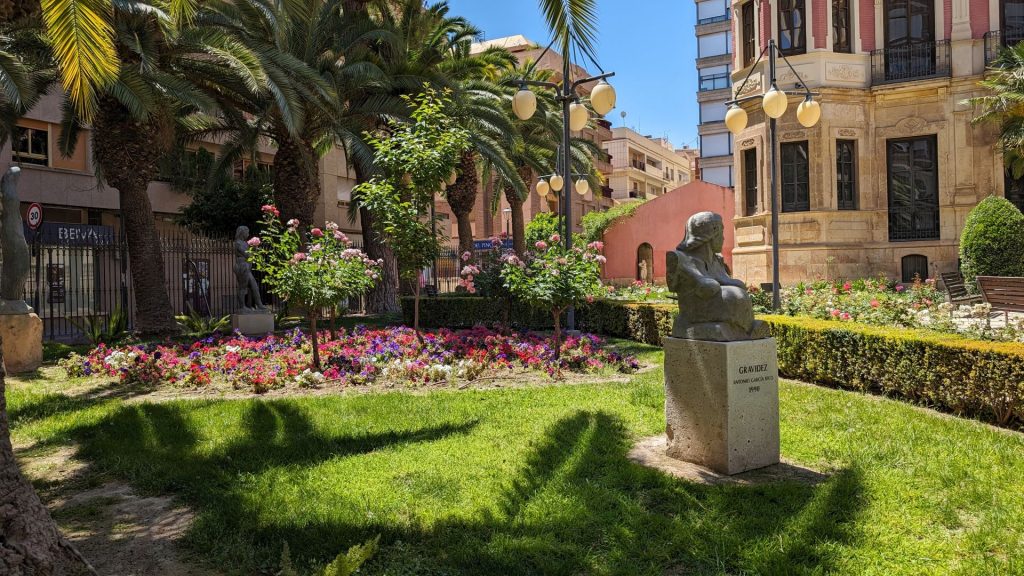
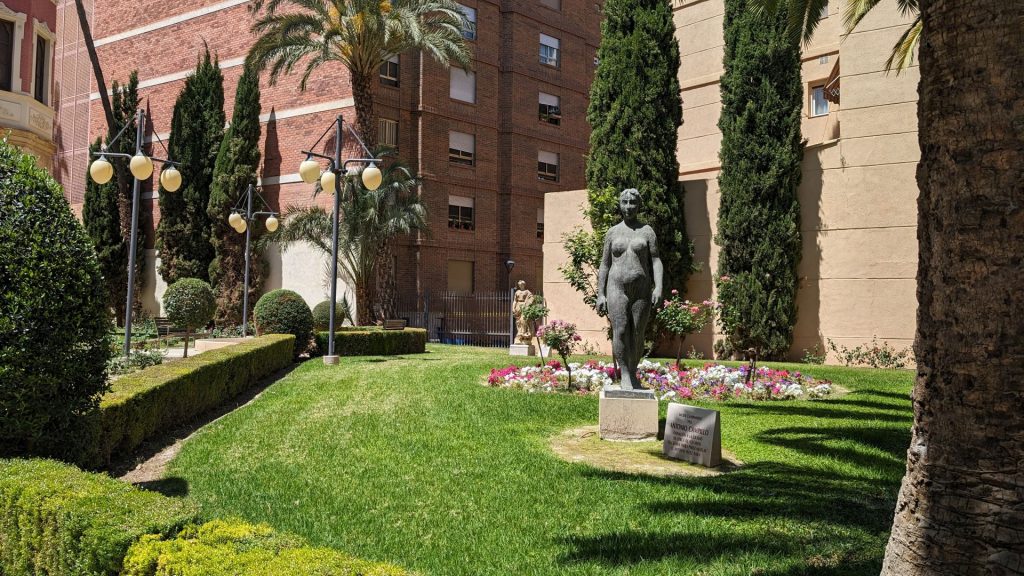
Our visit ended with a stroll through some beautiful gardens.
